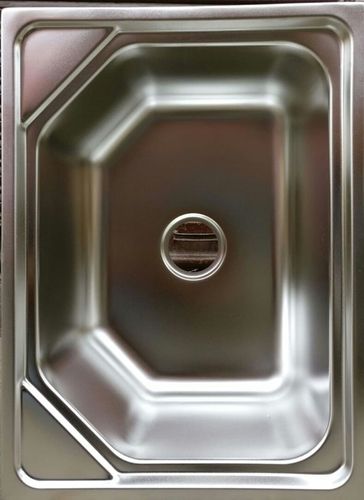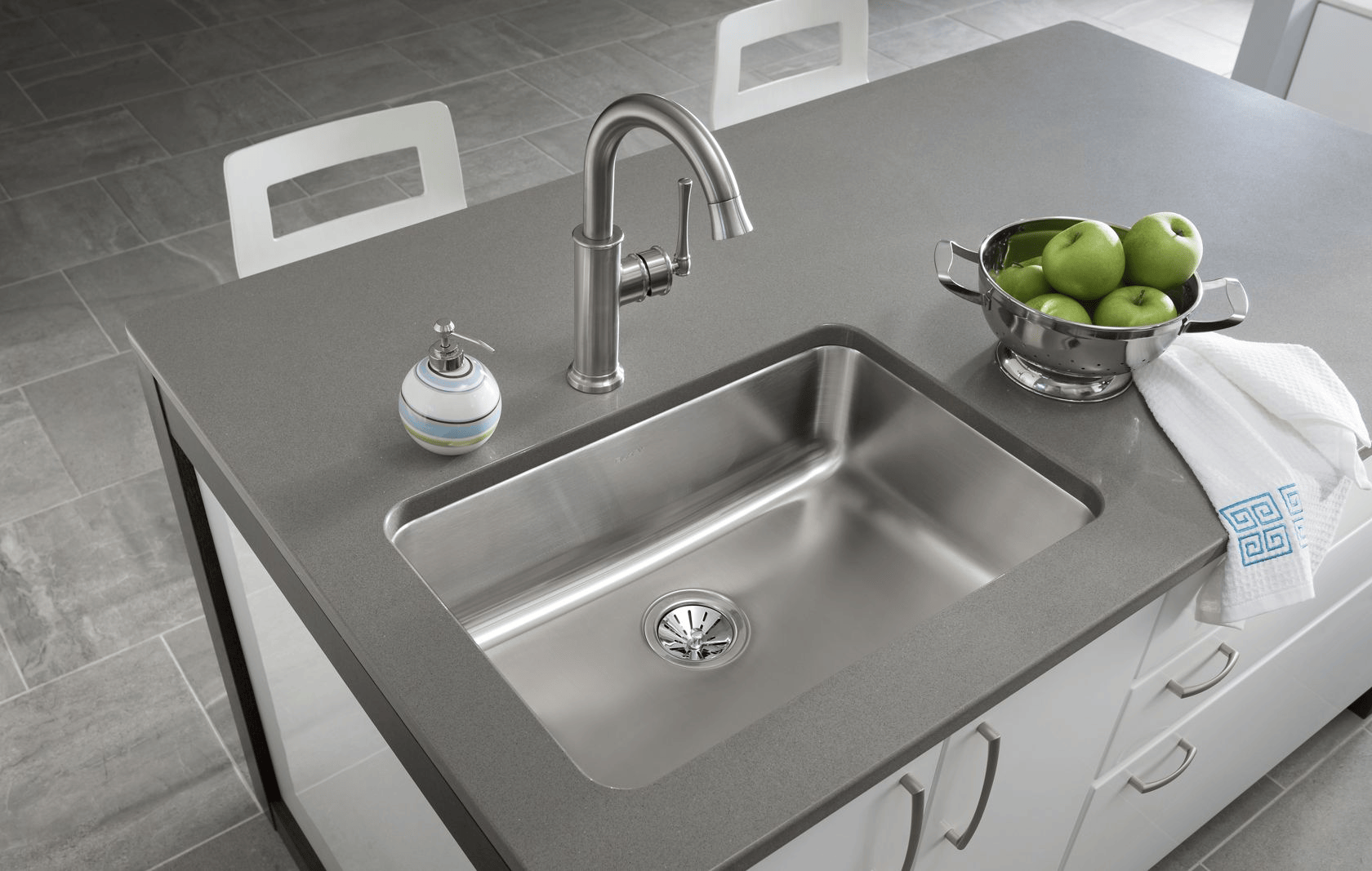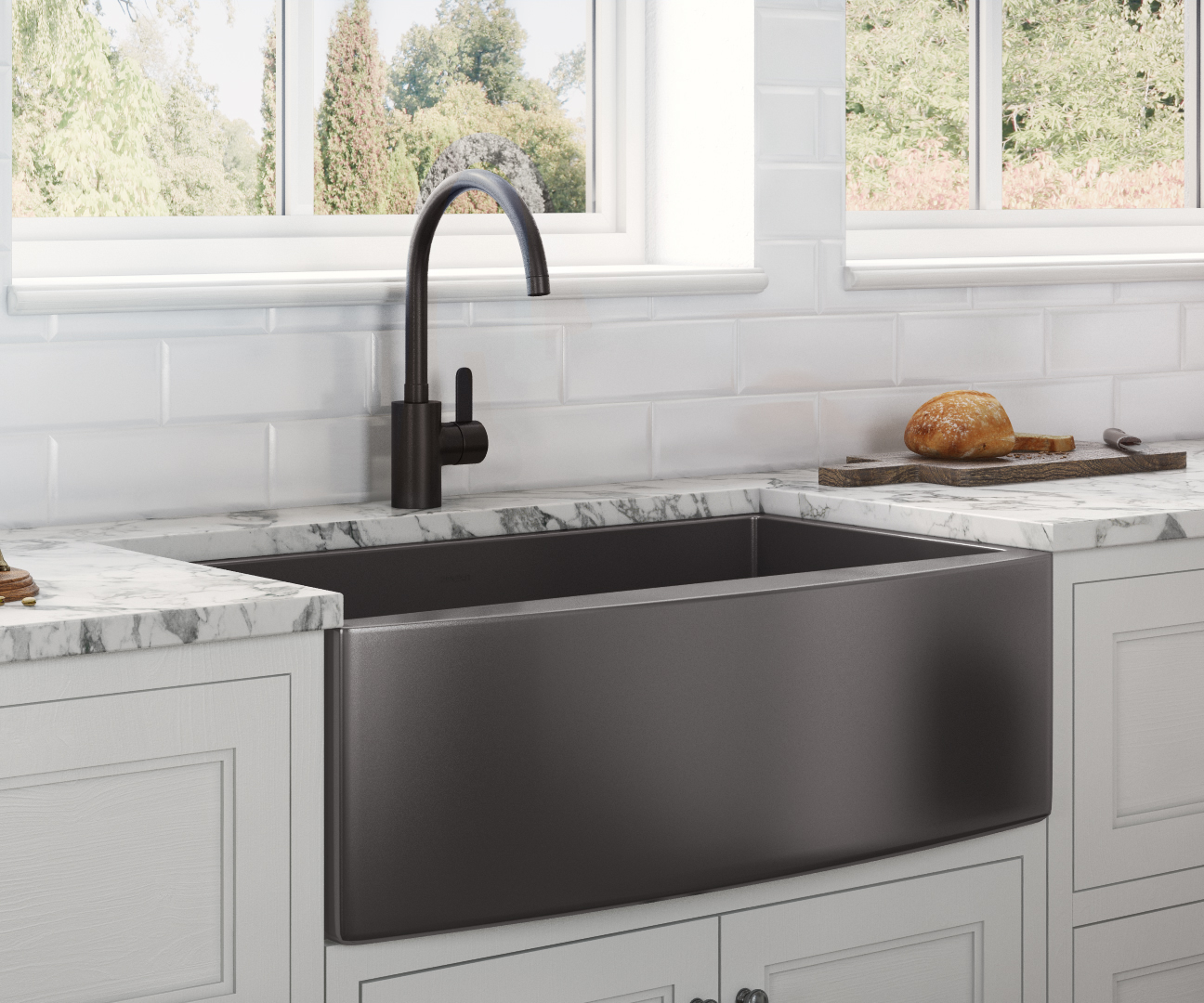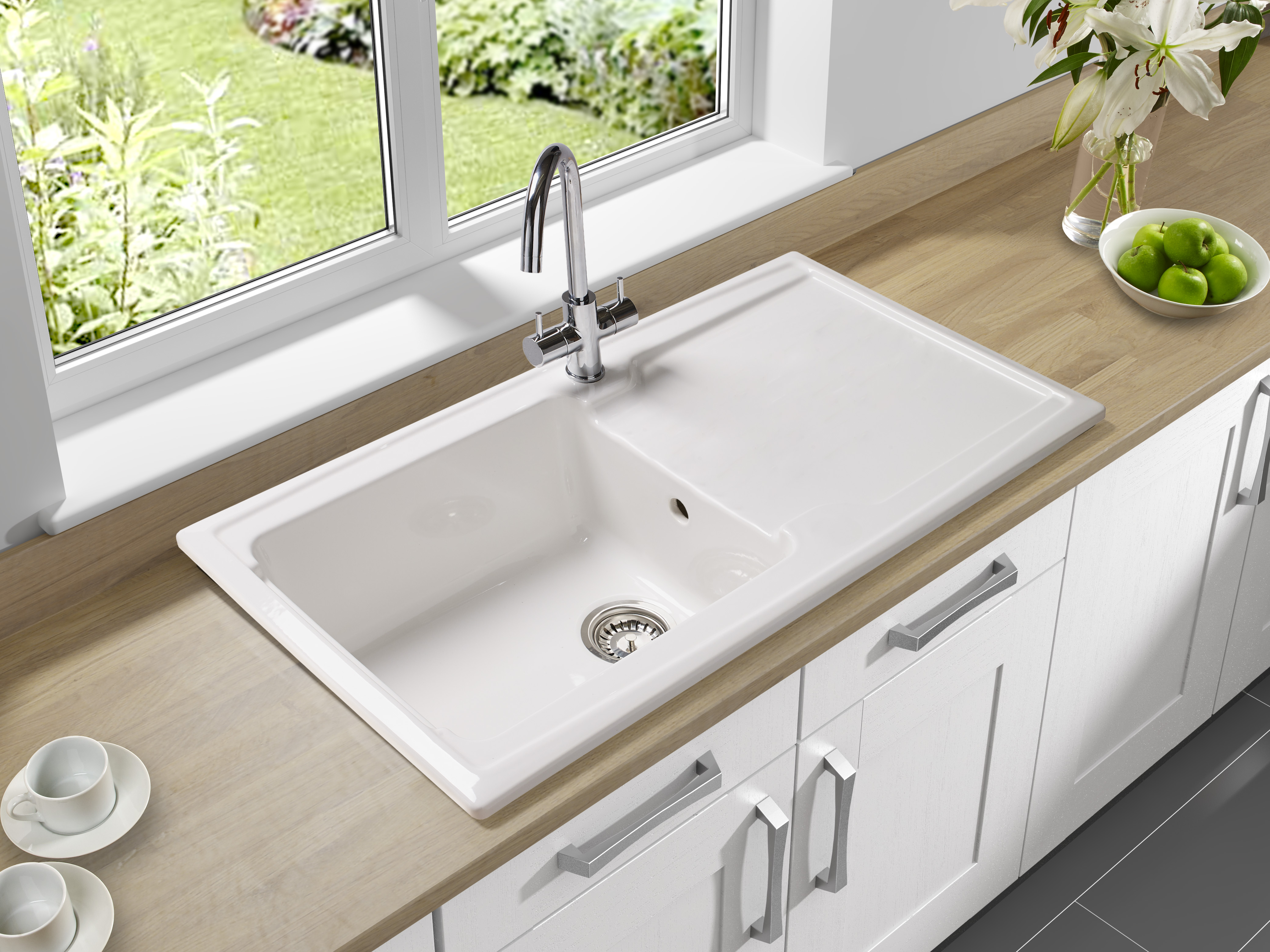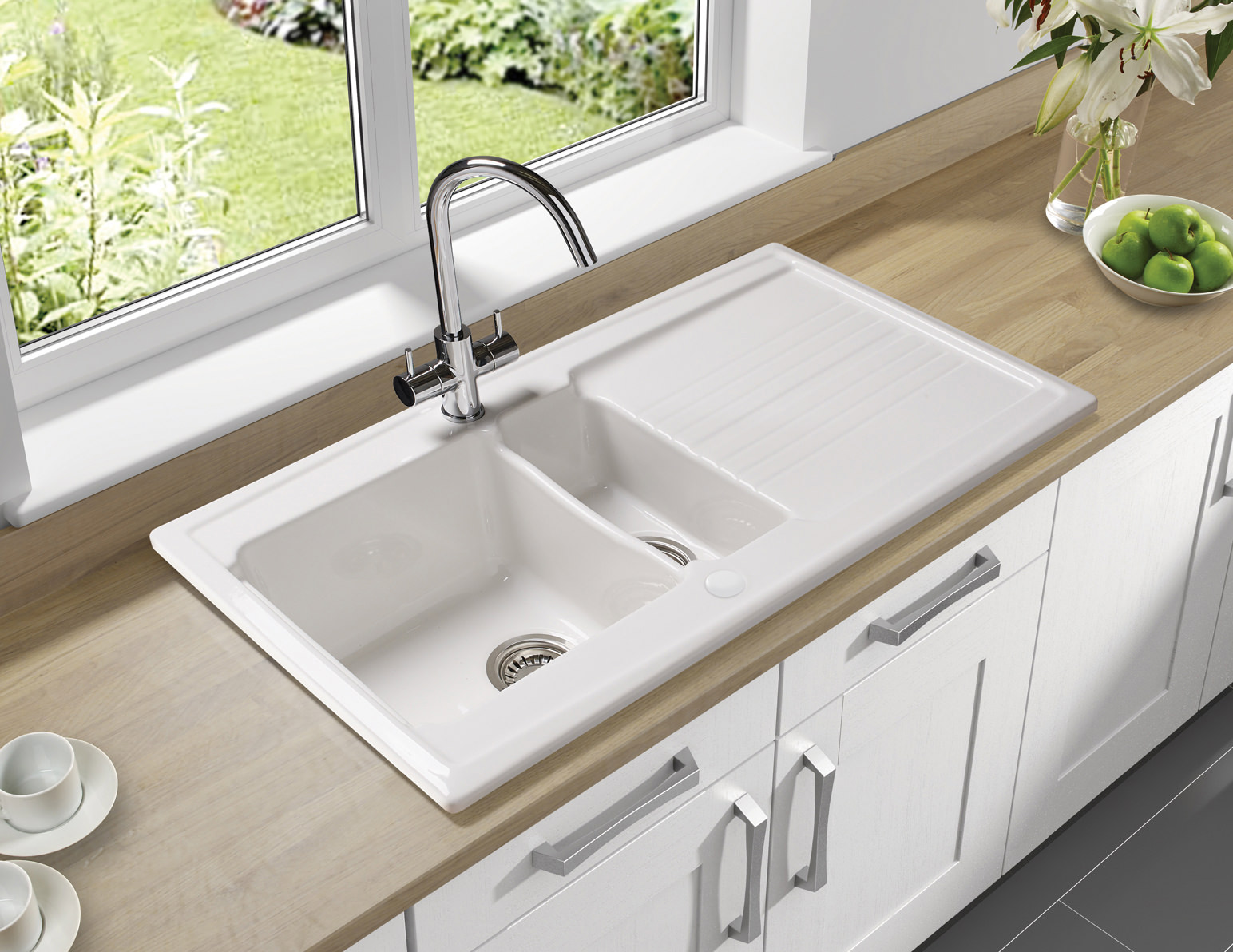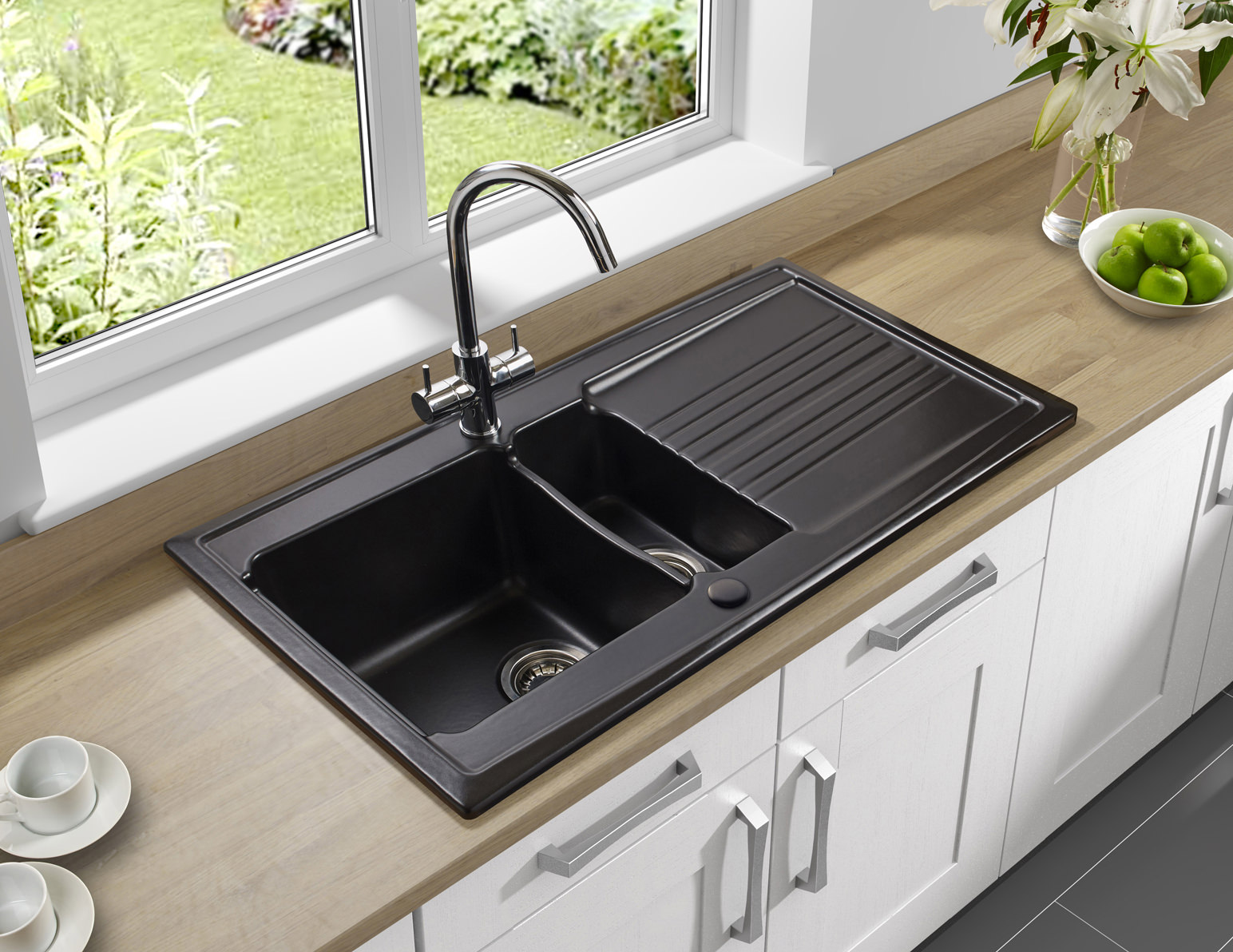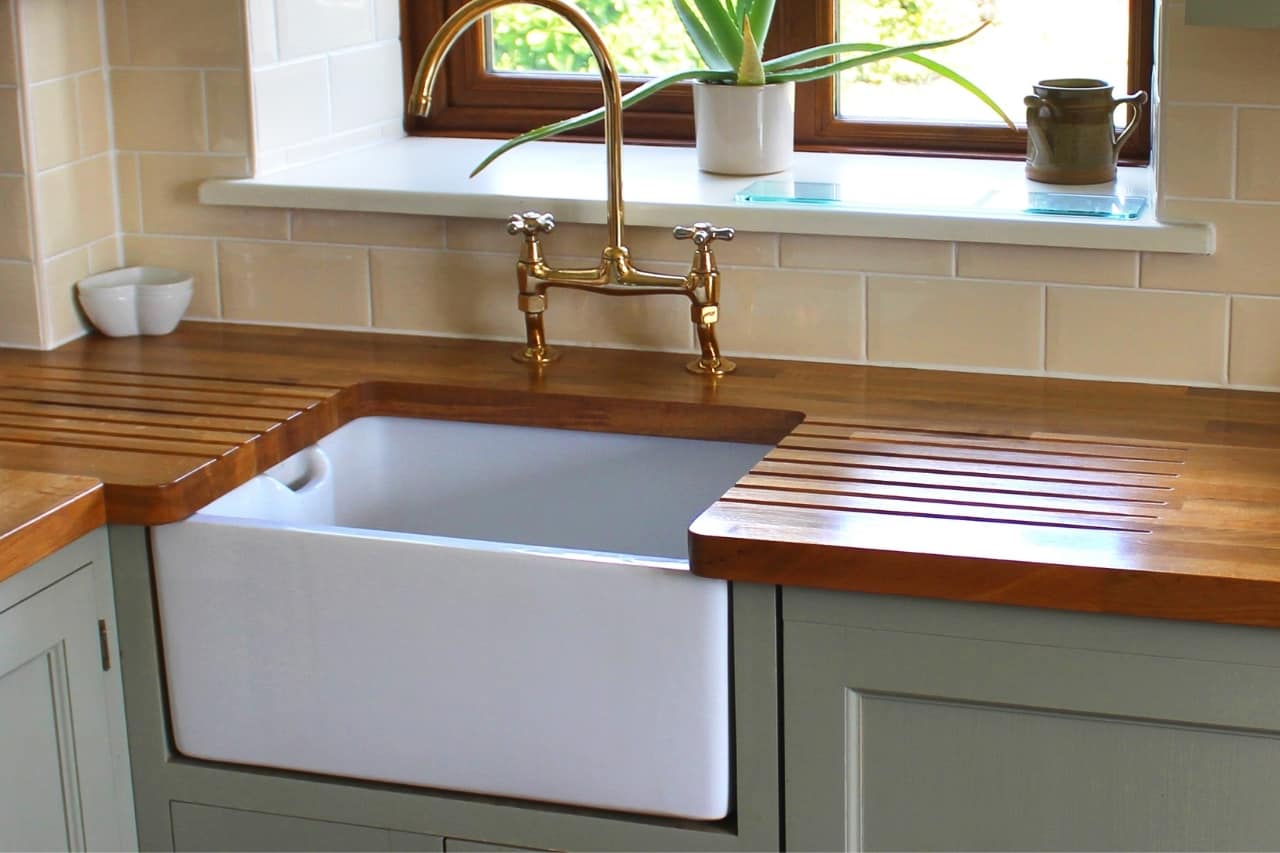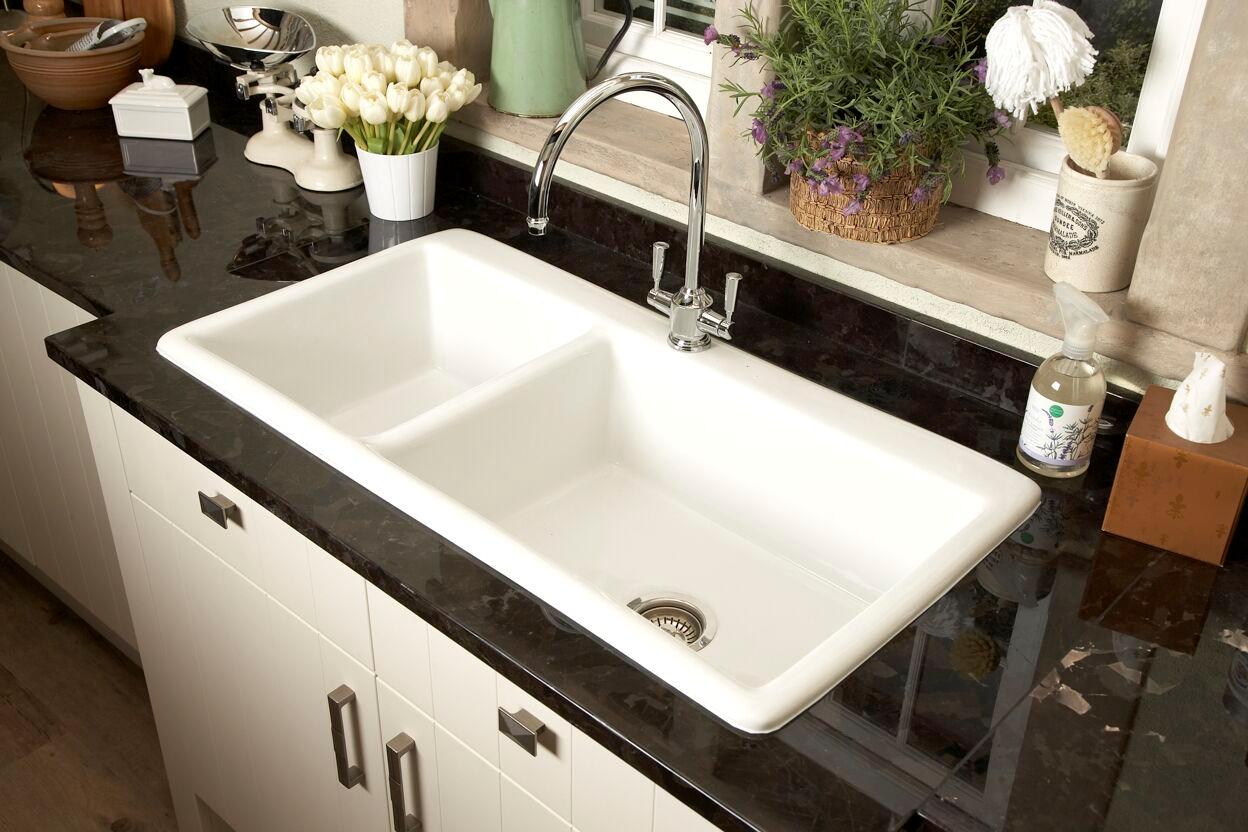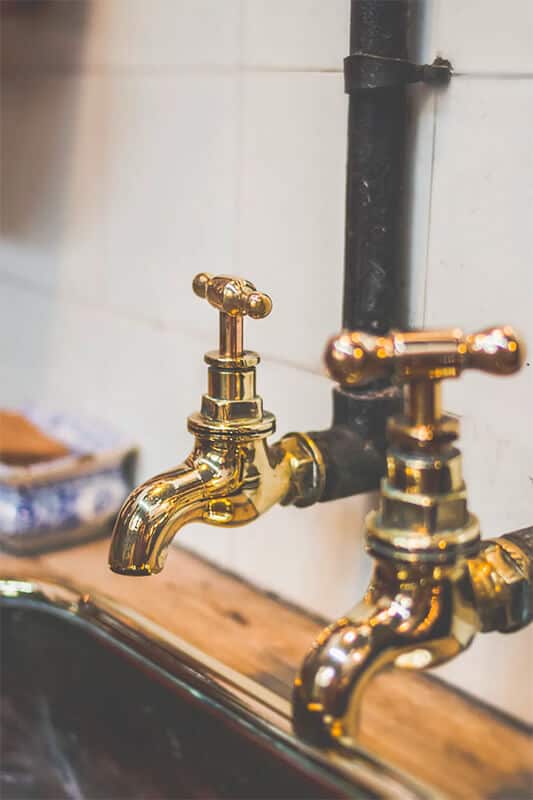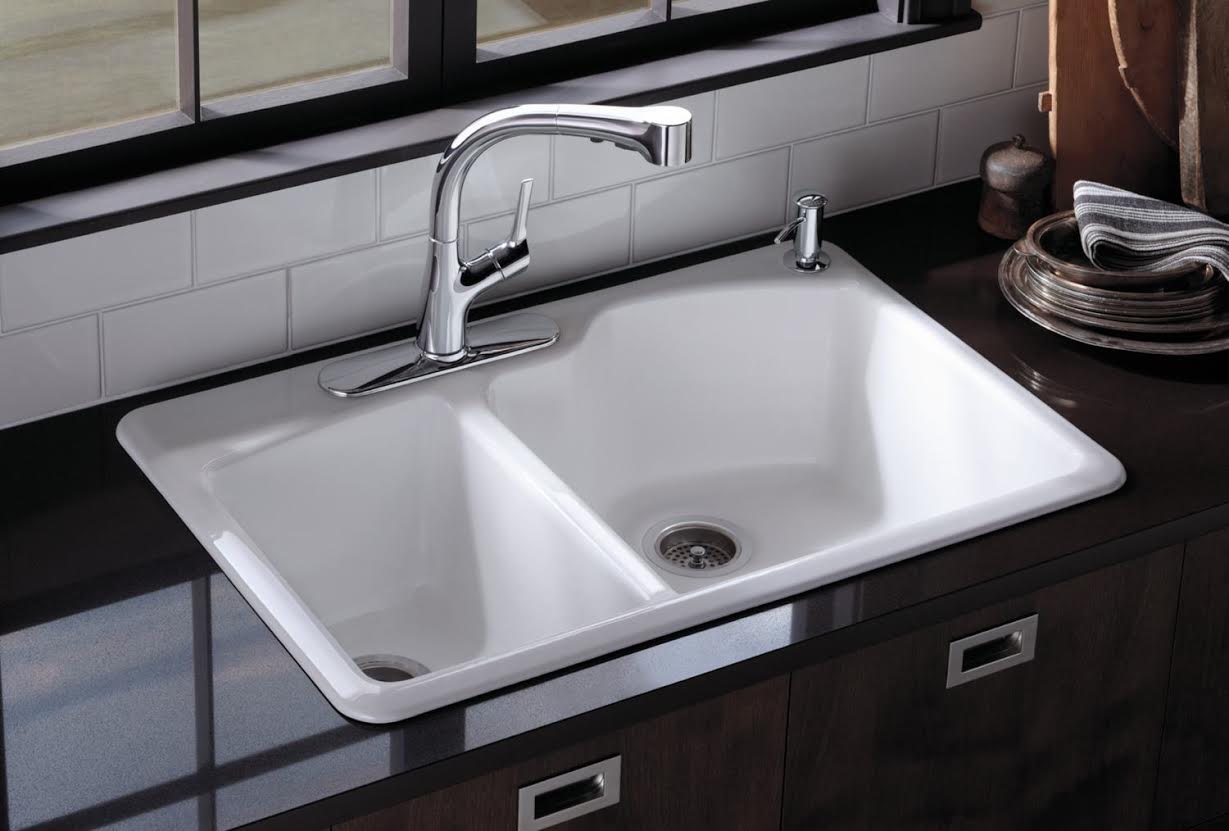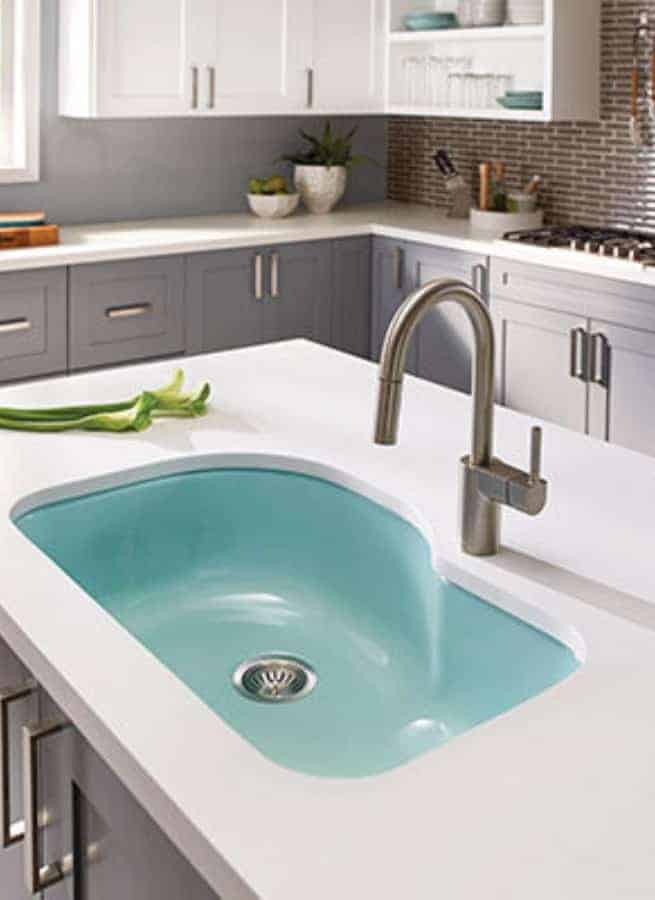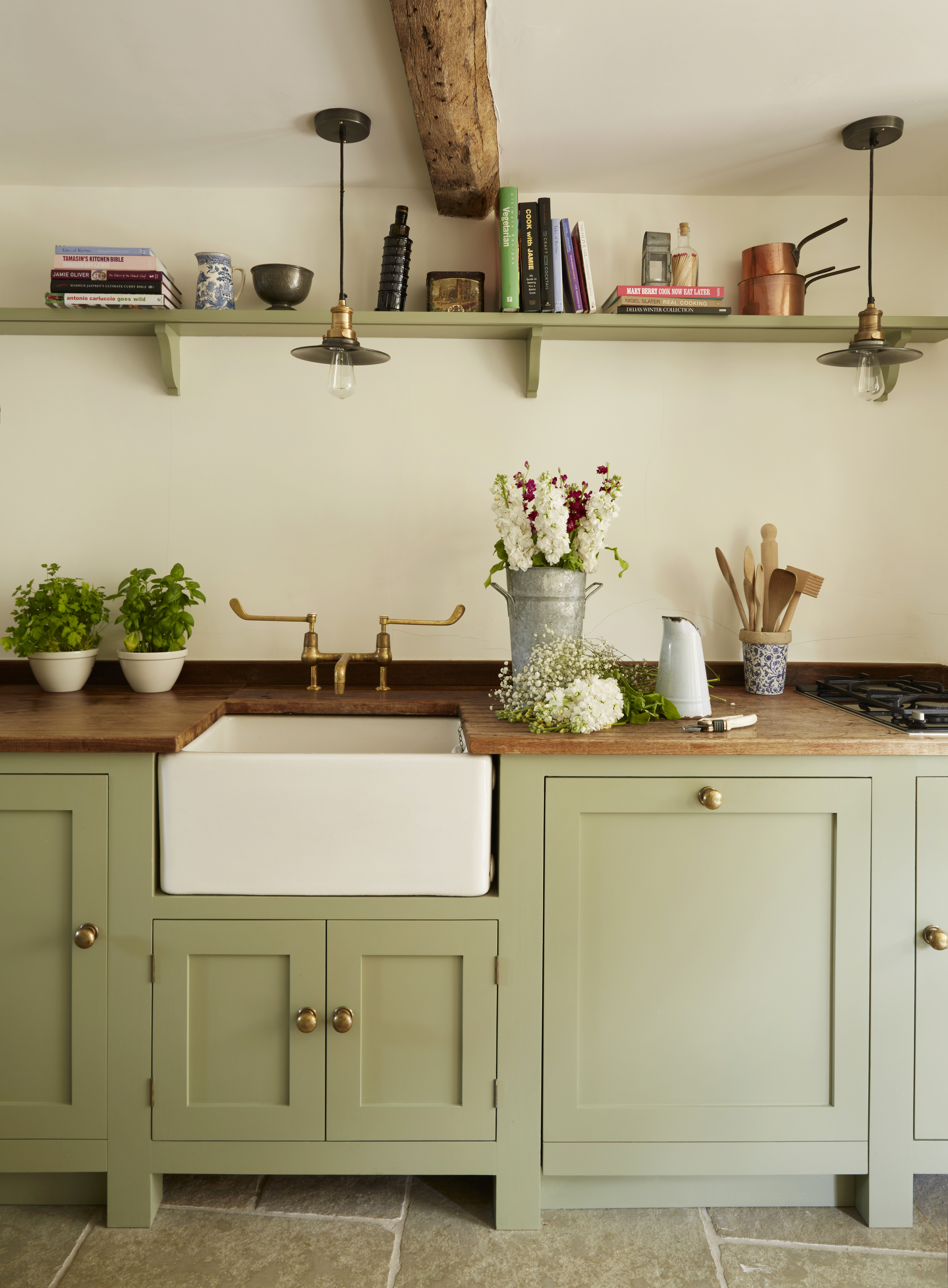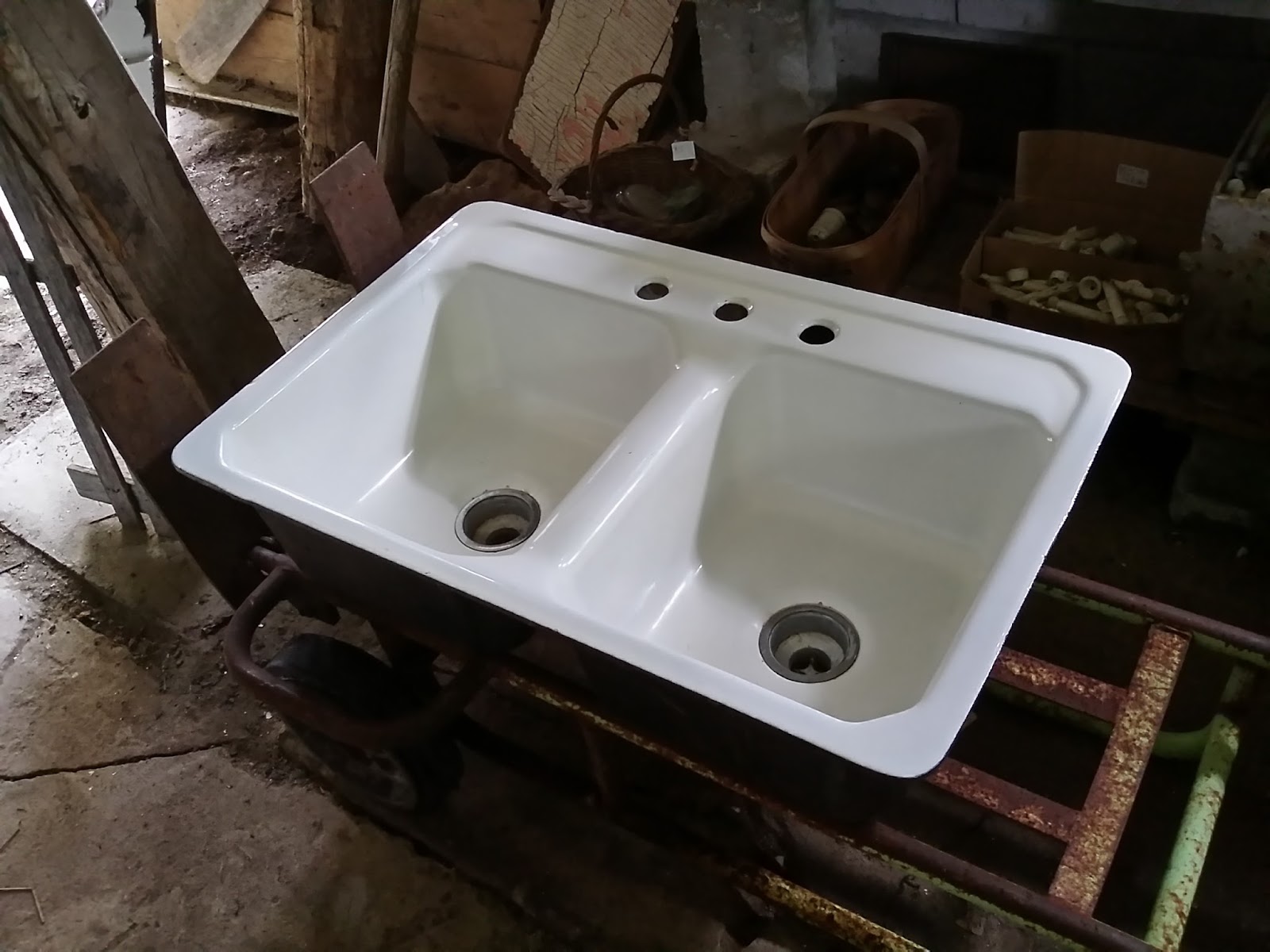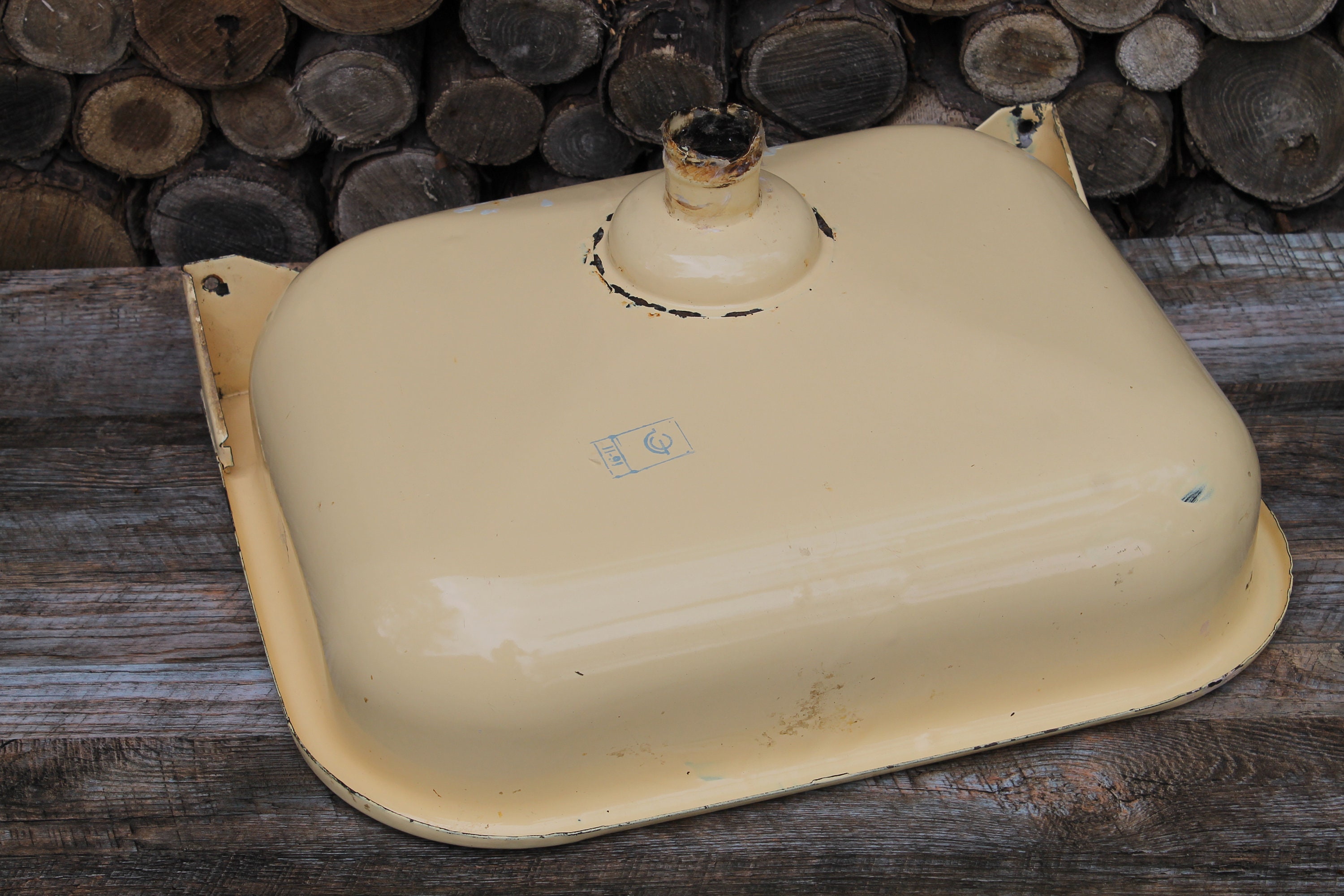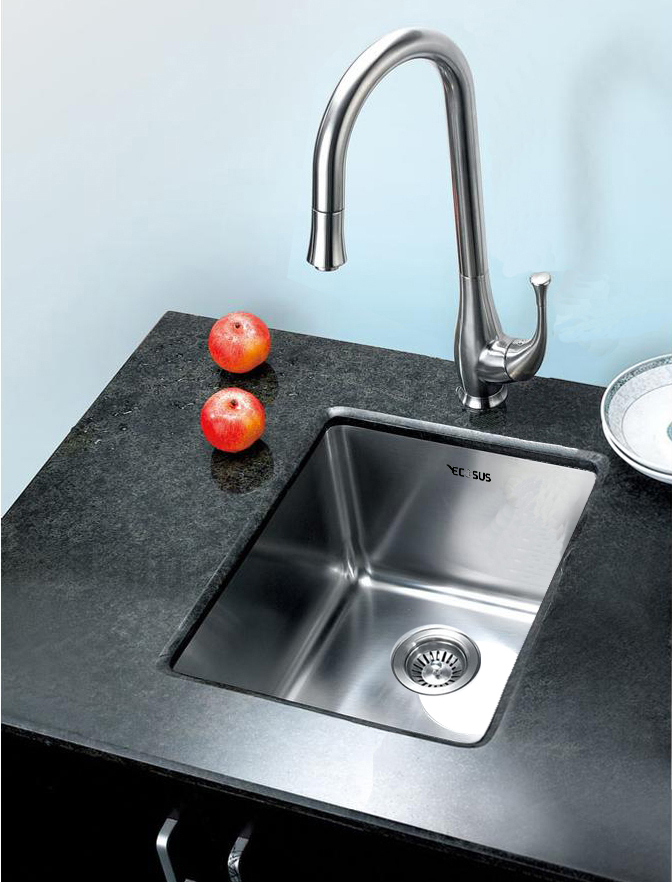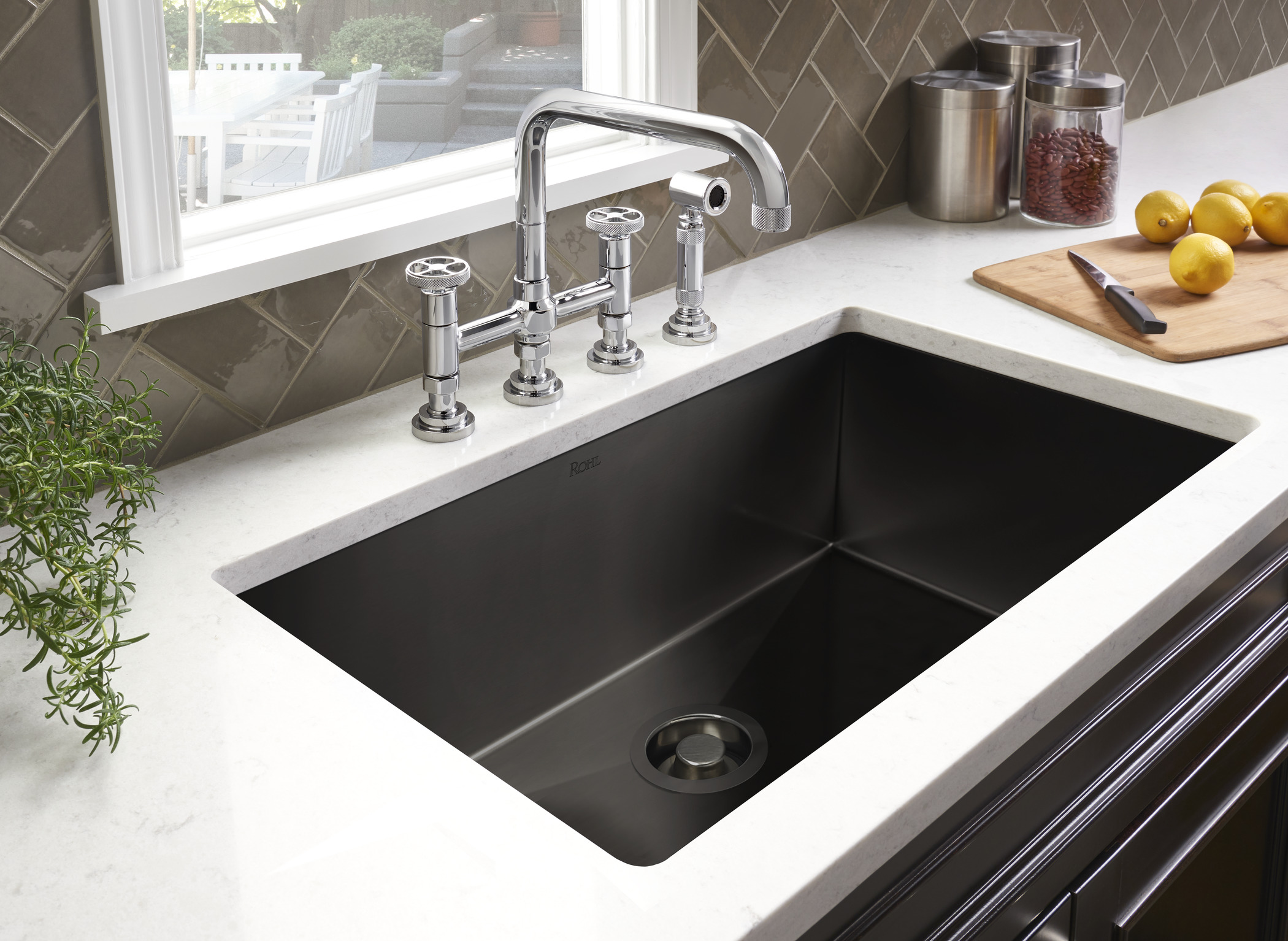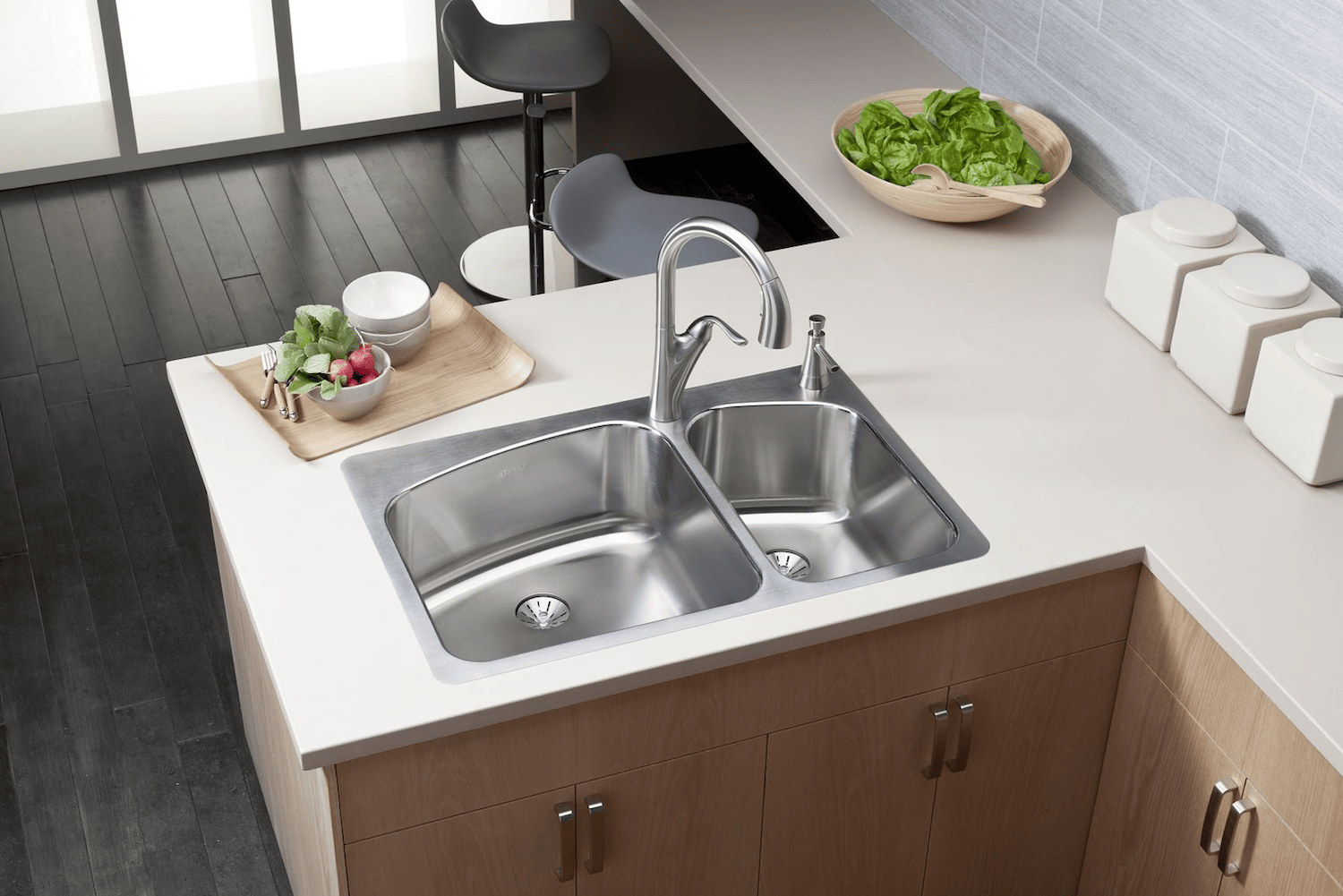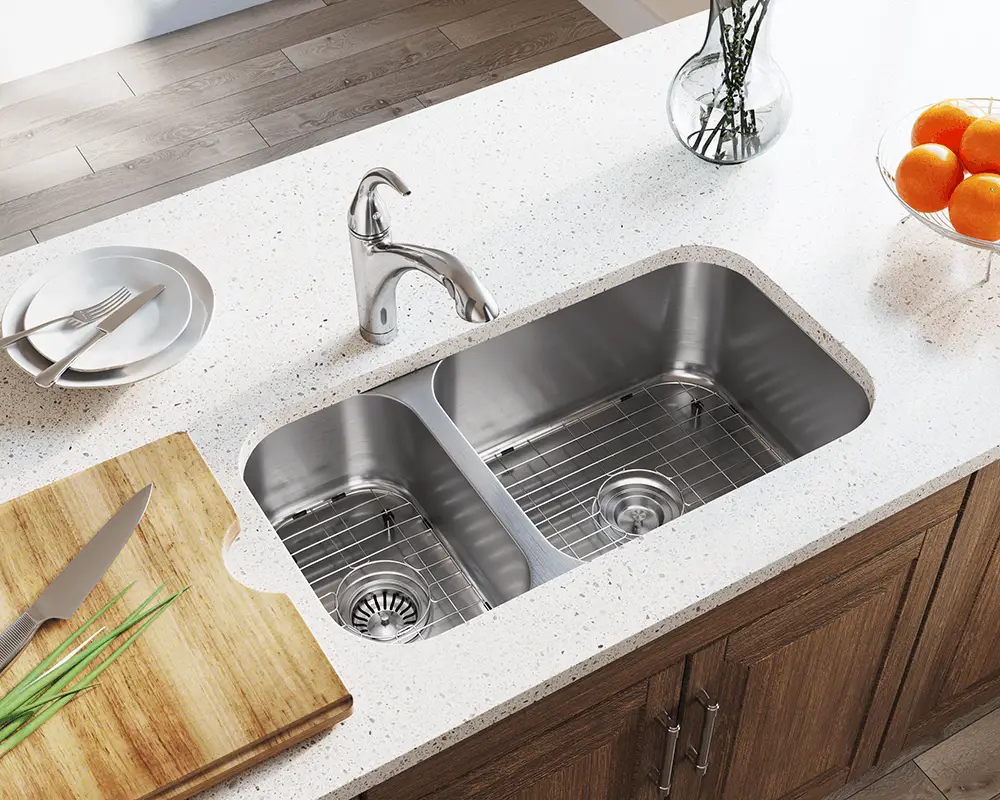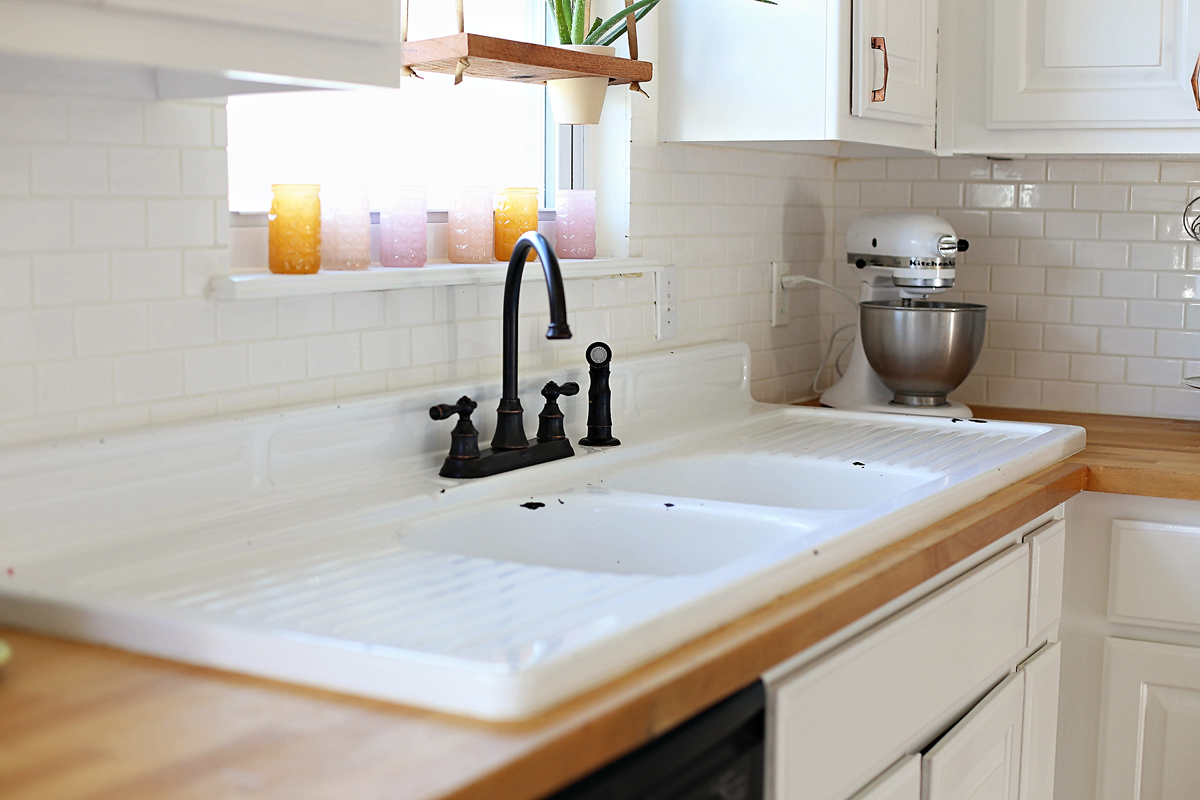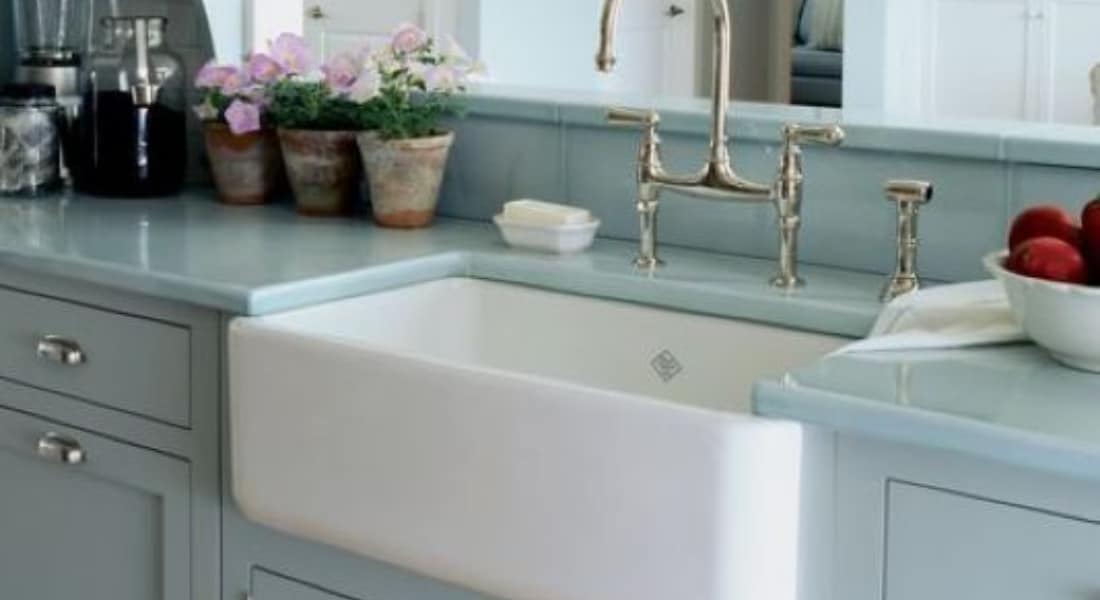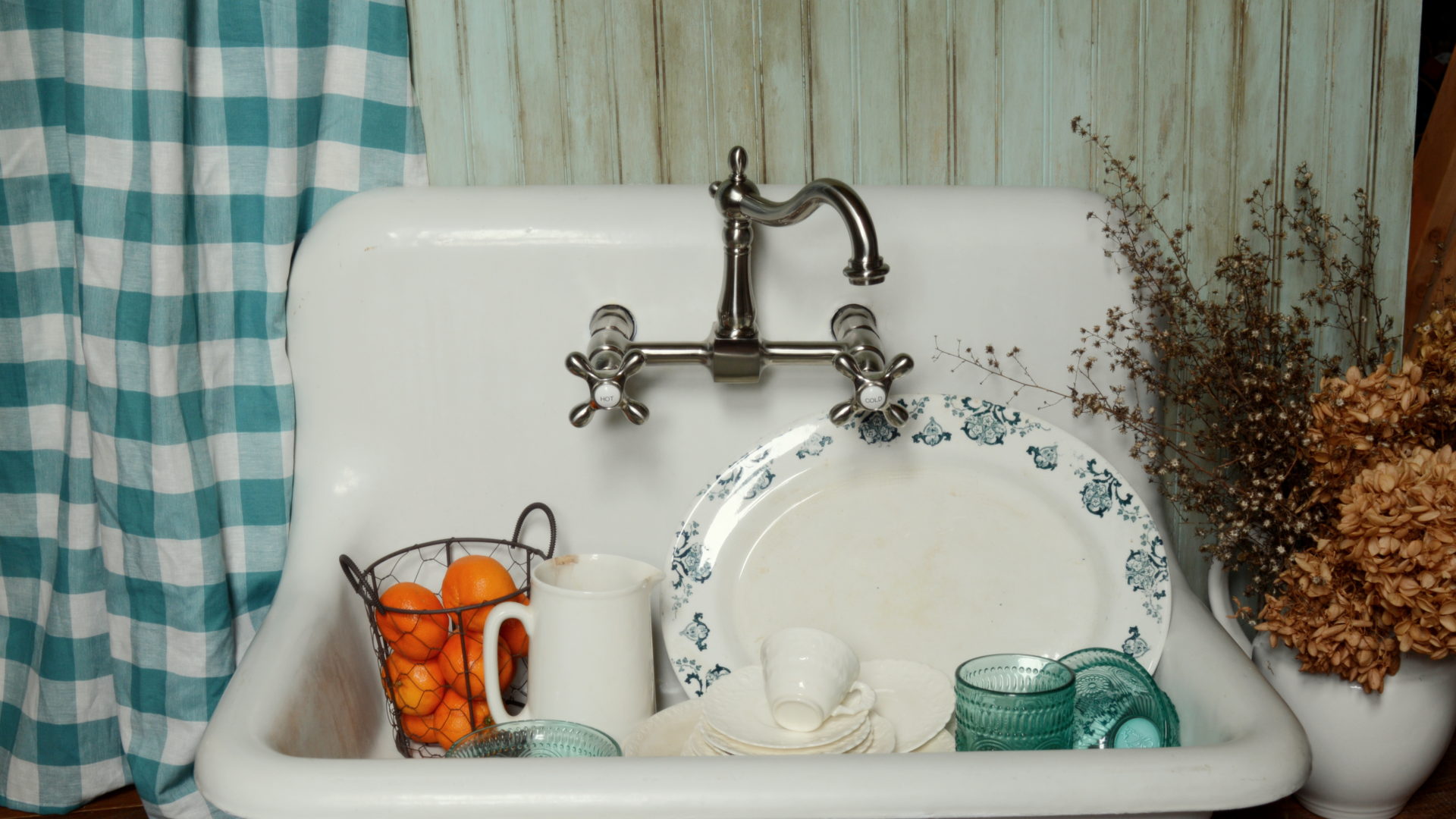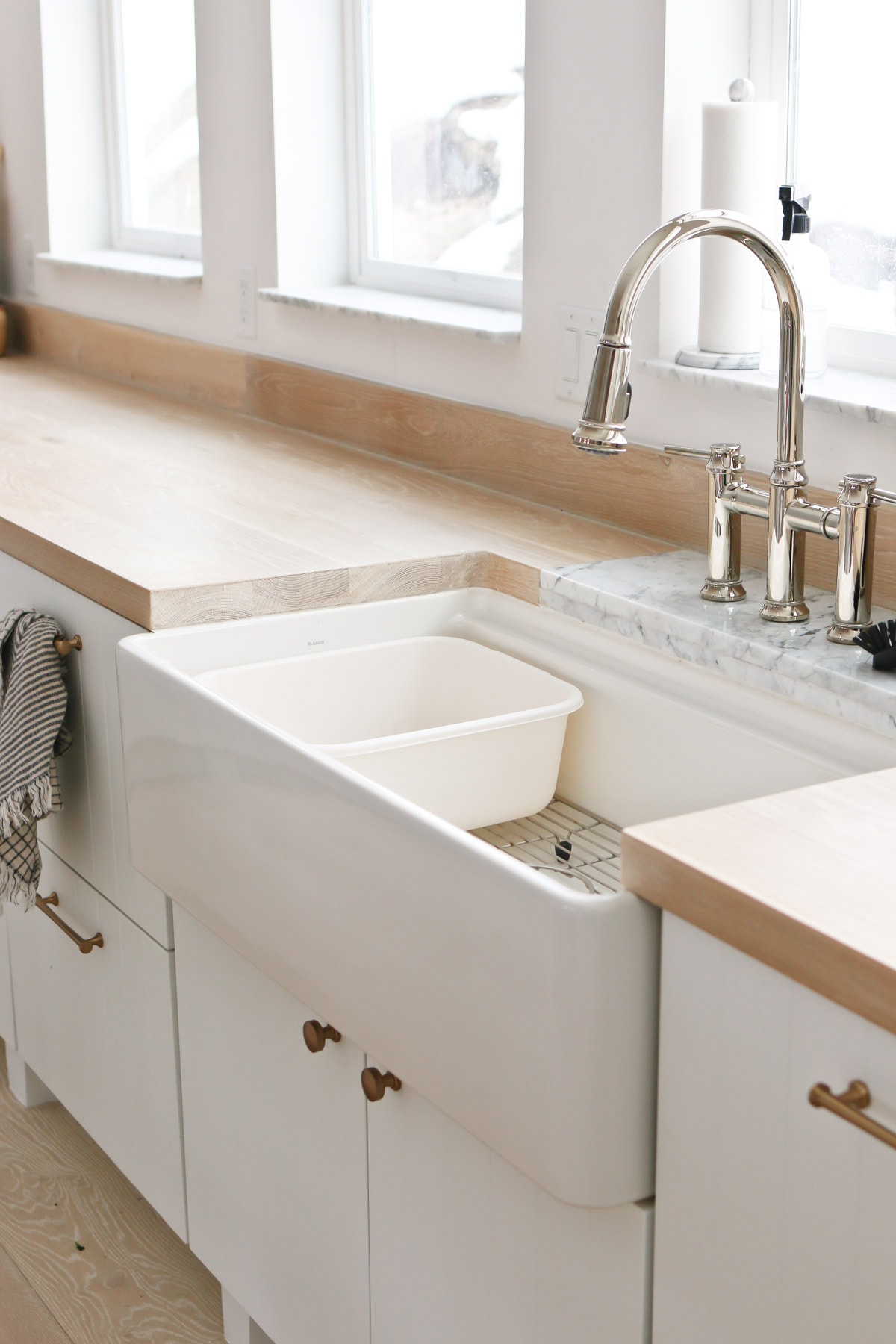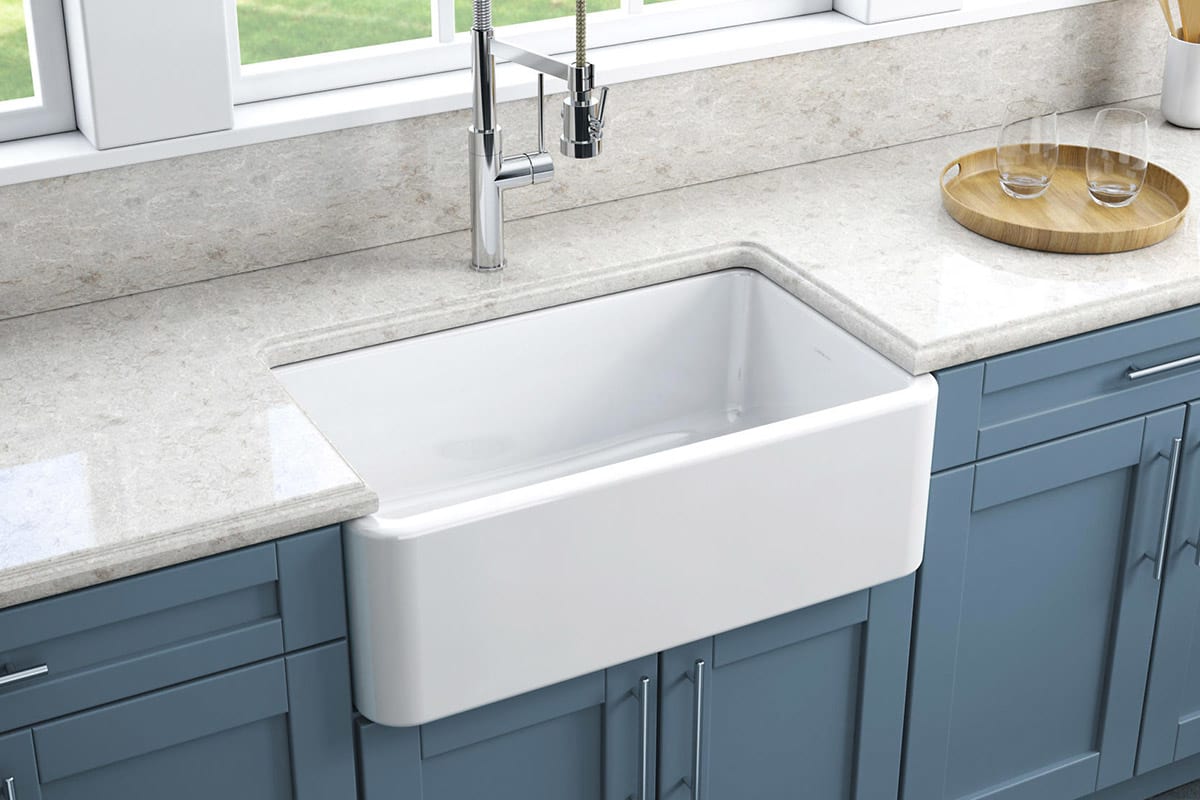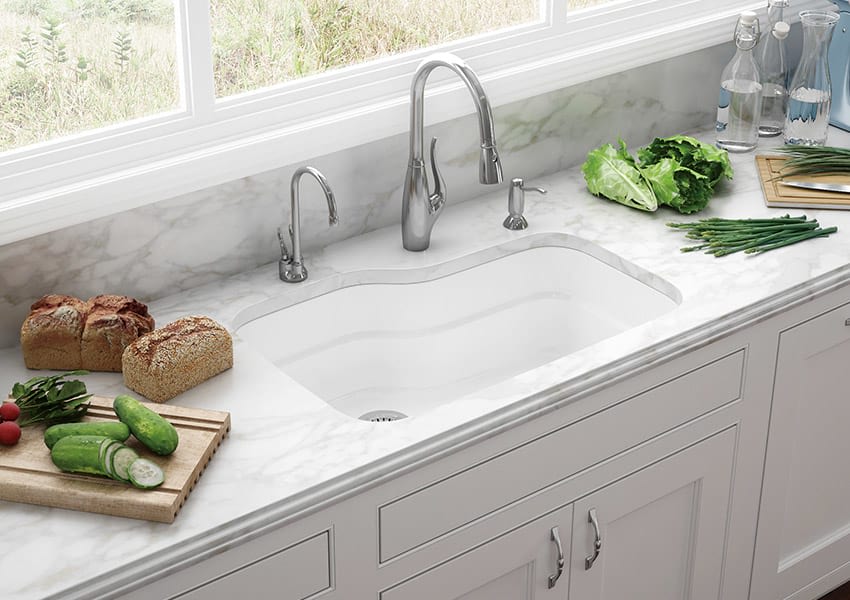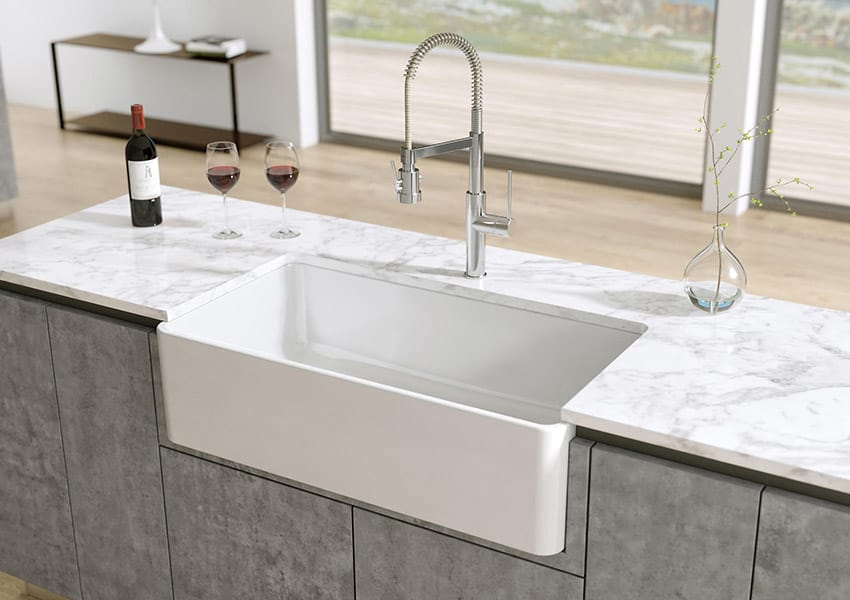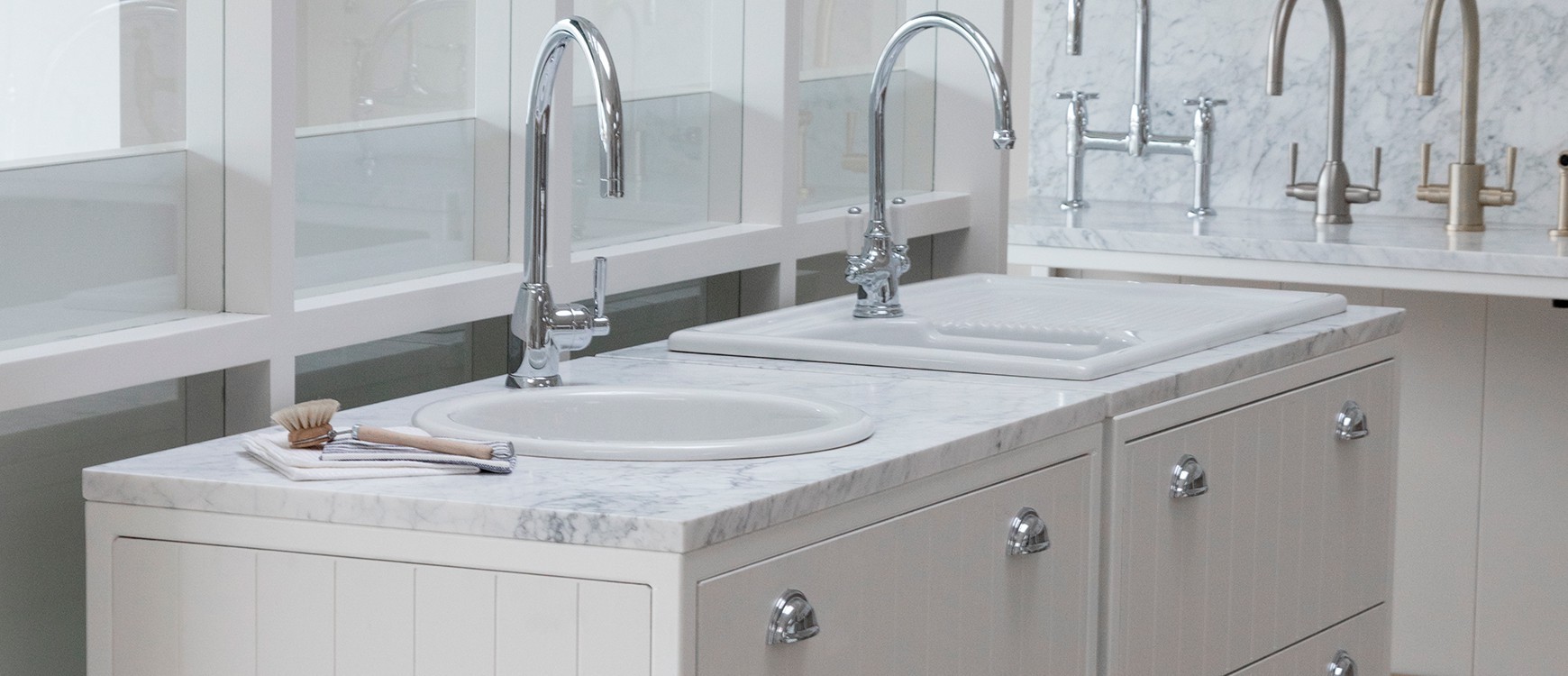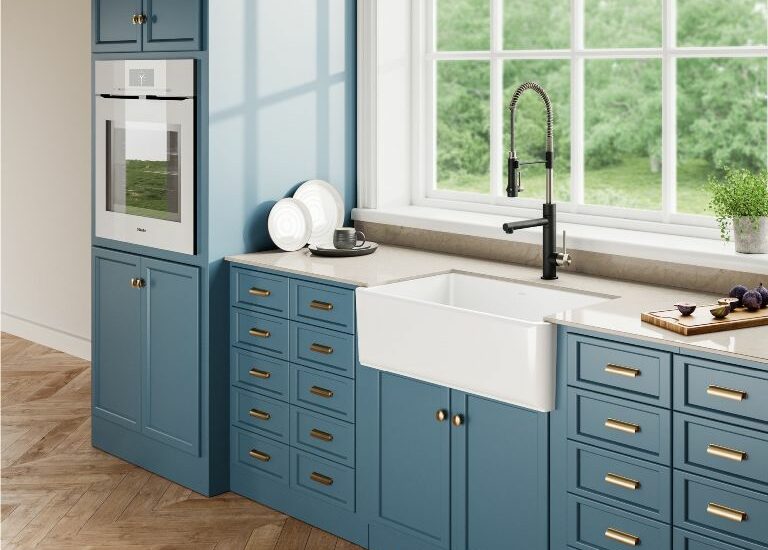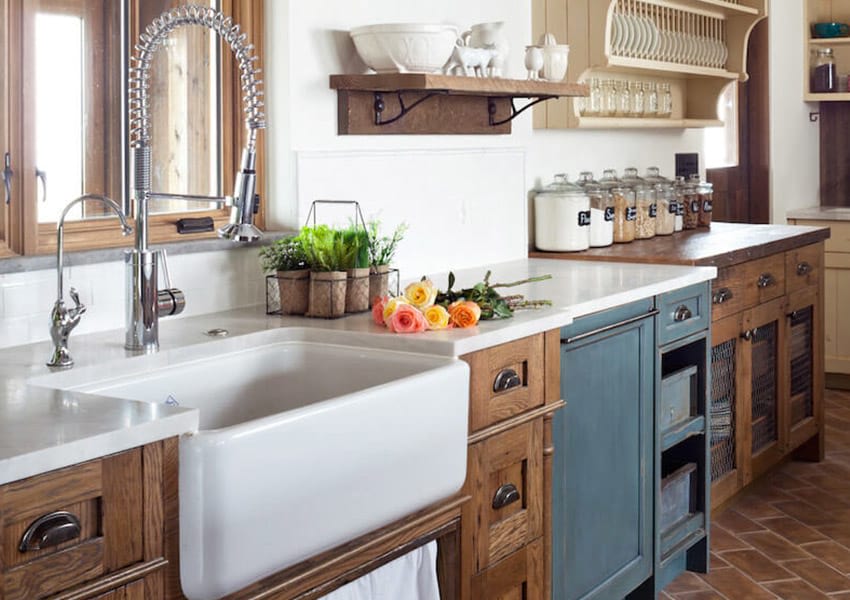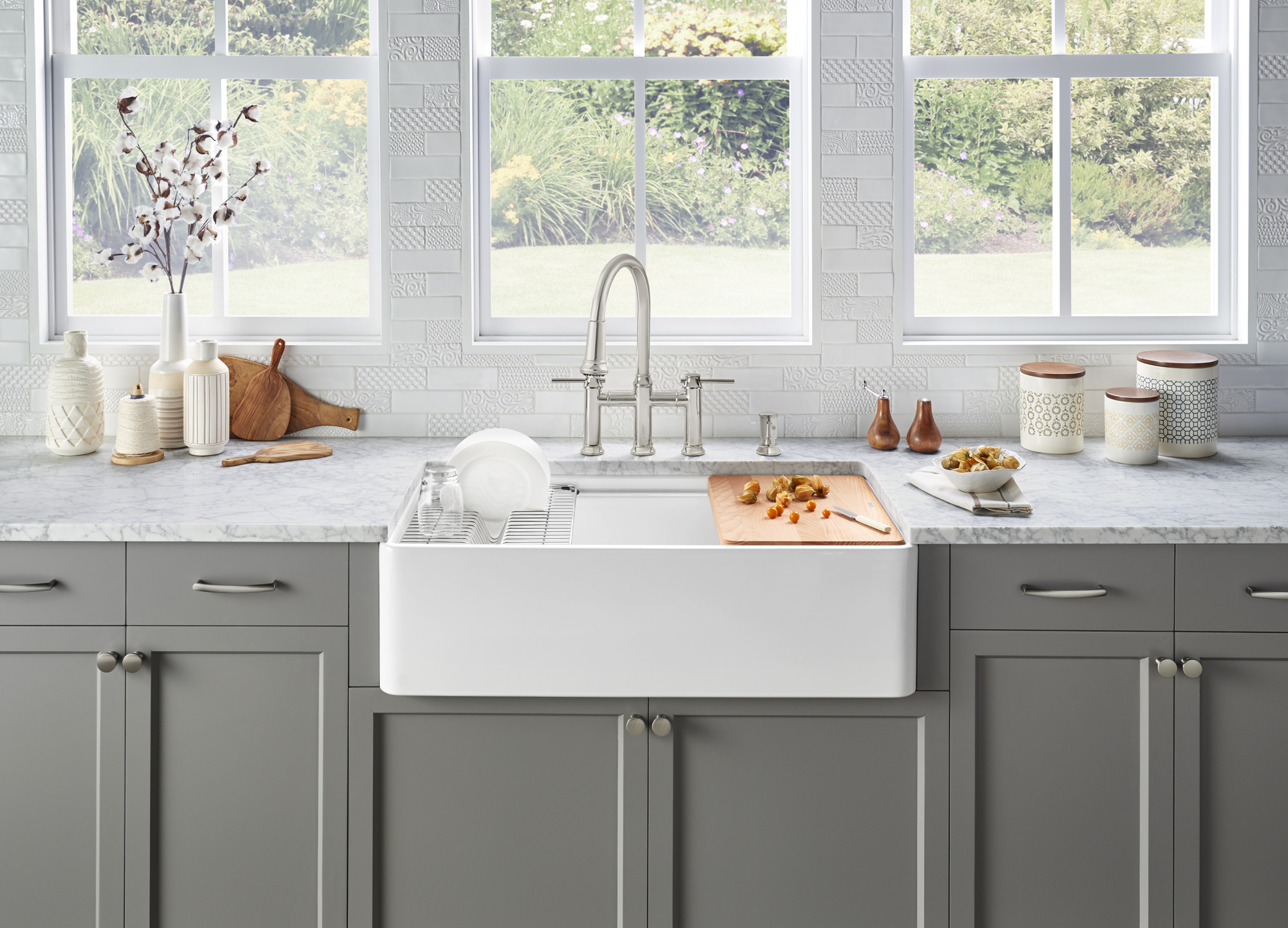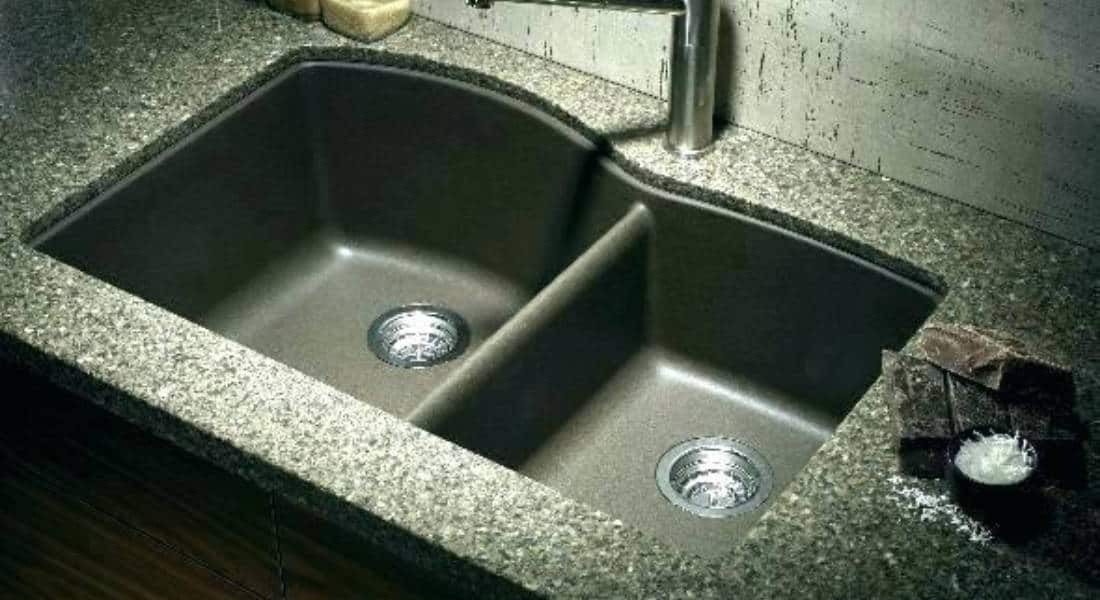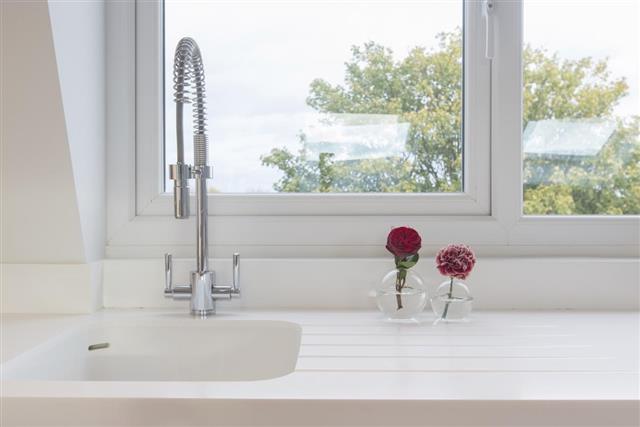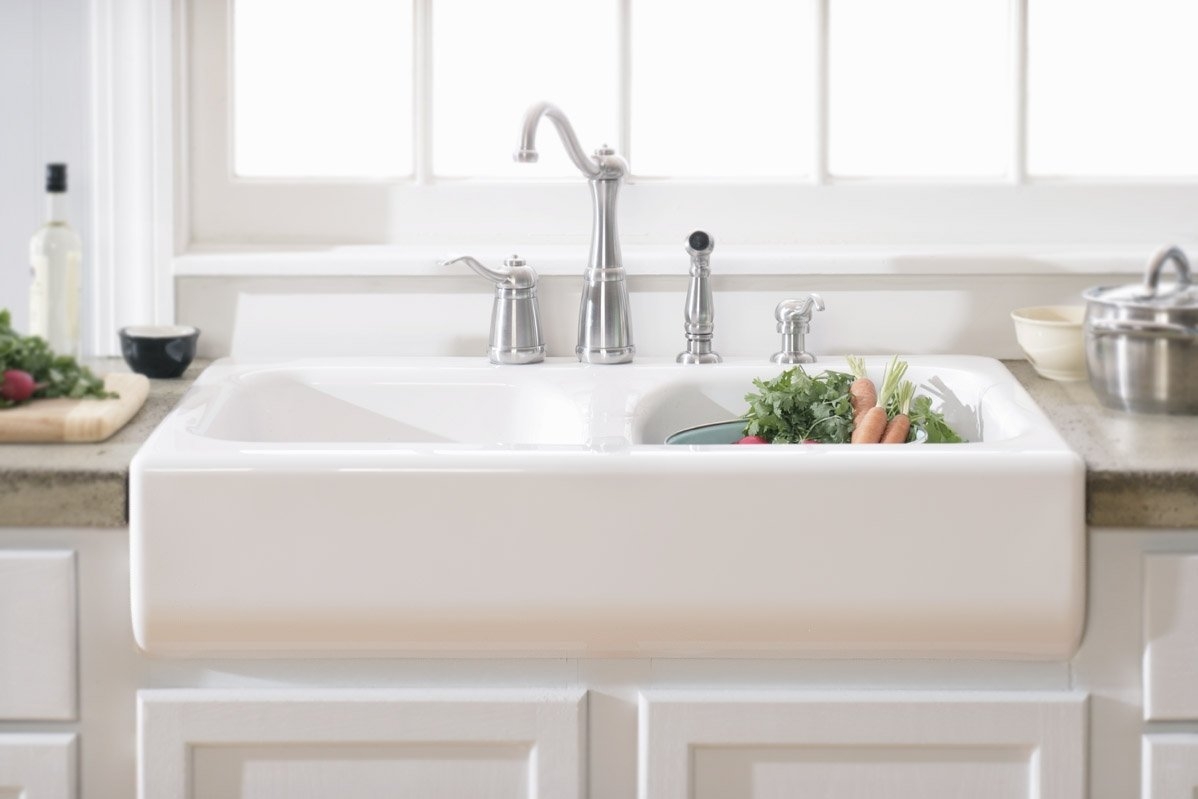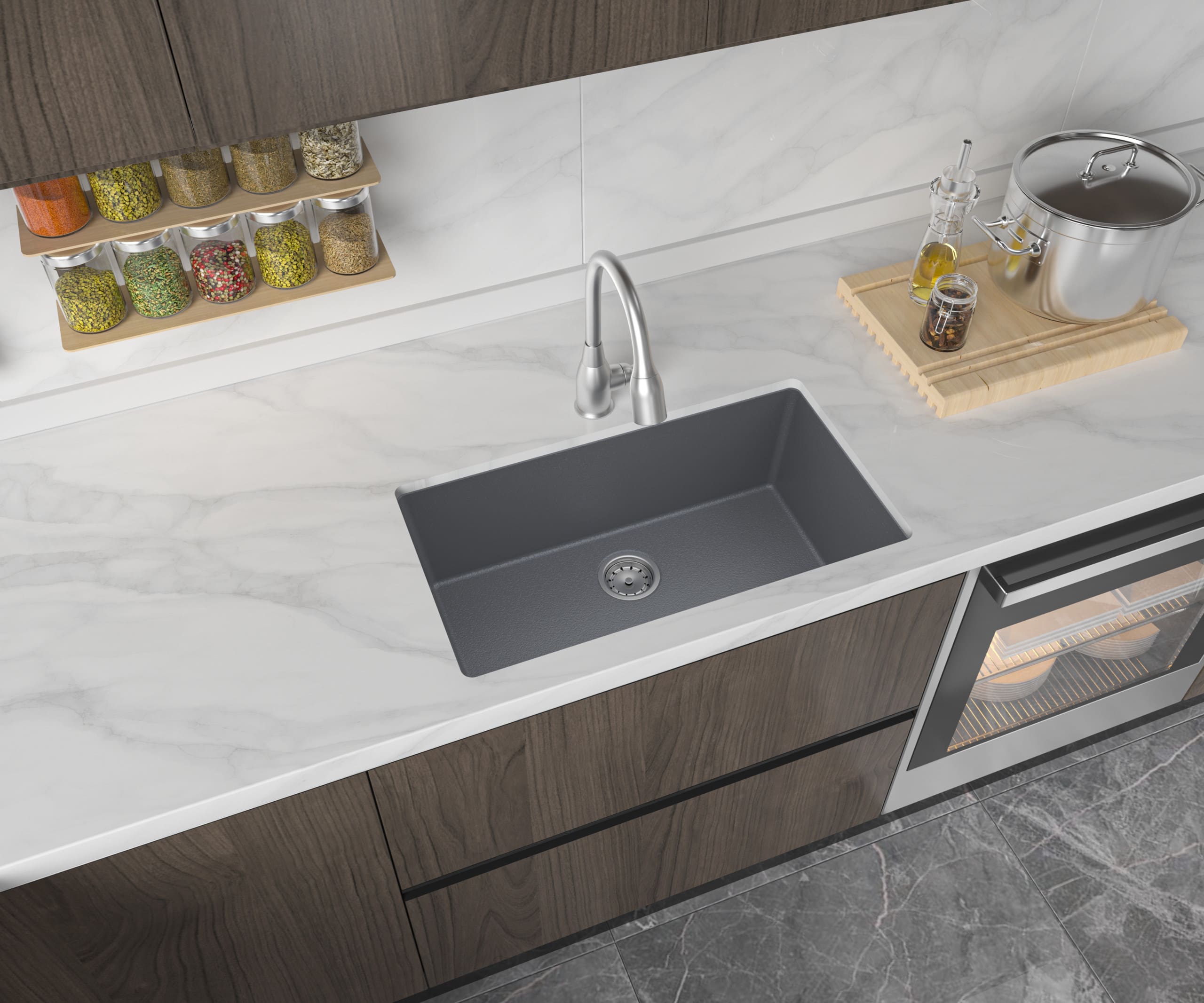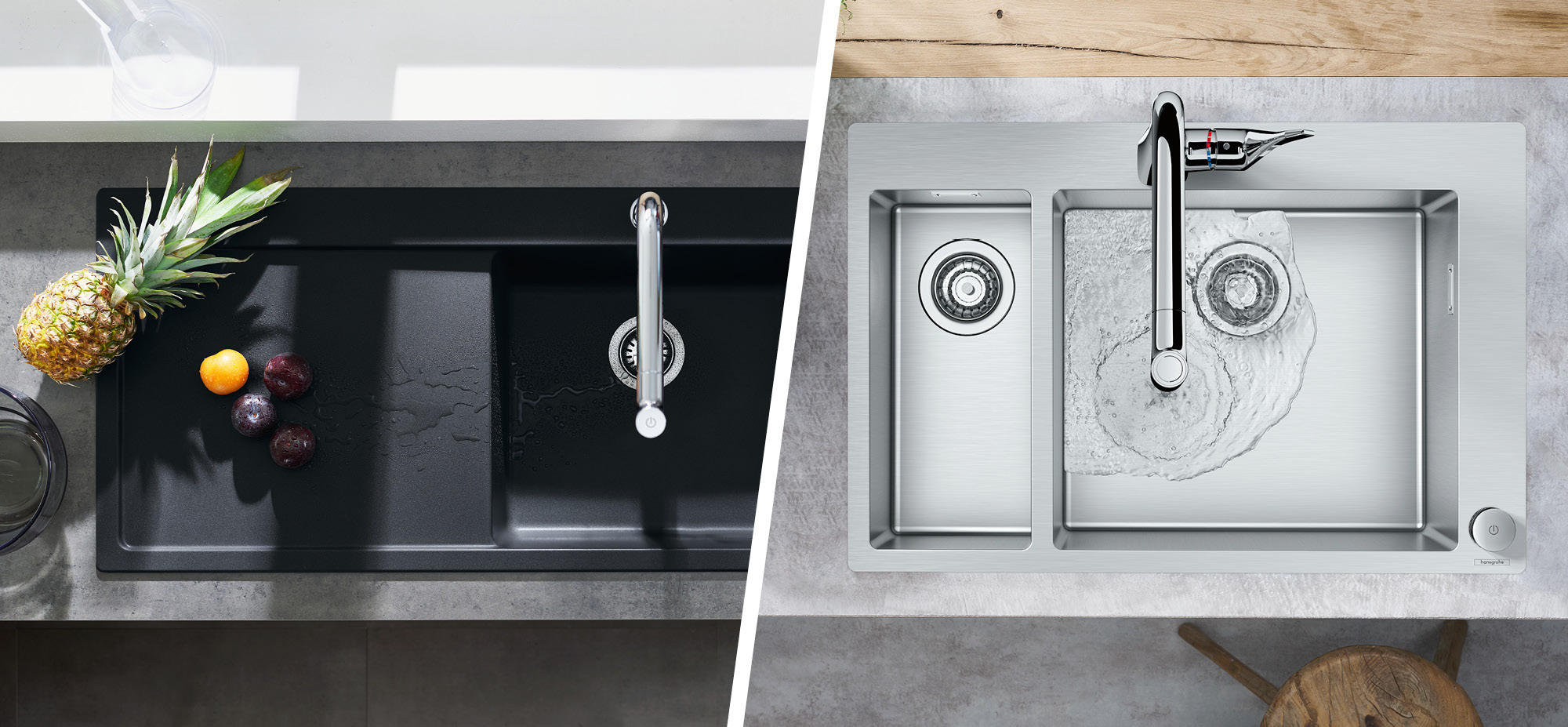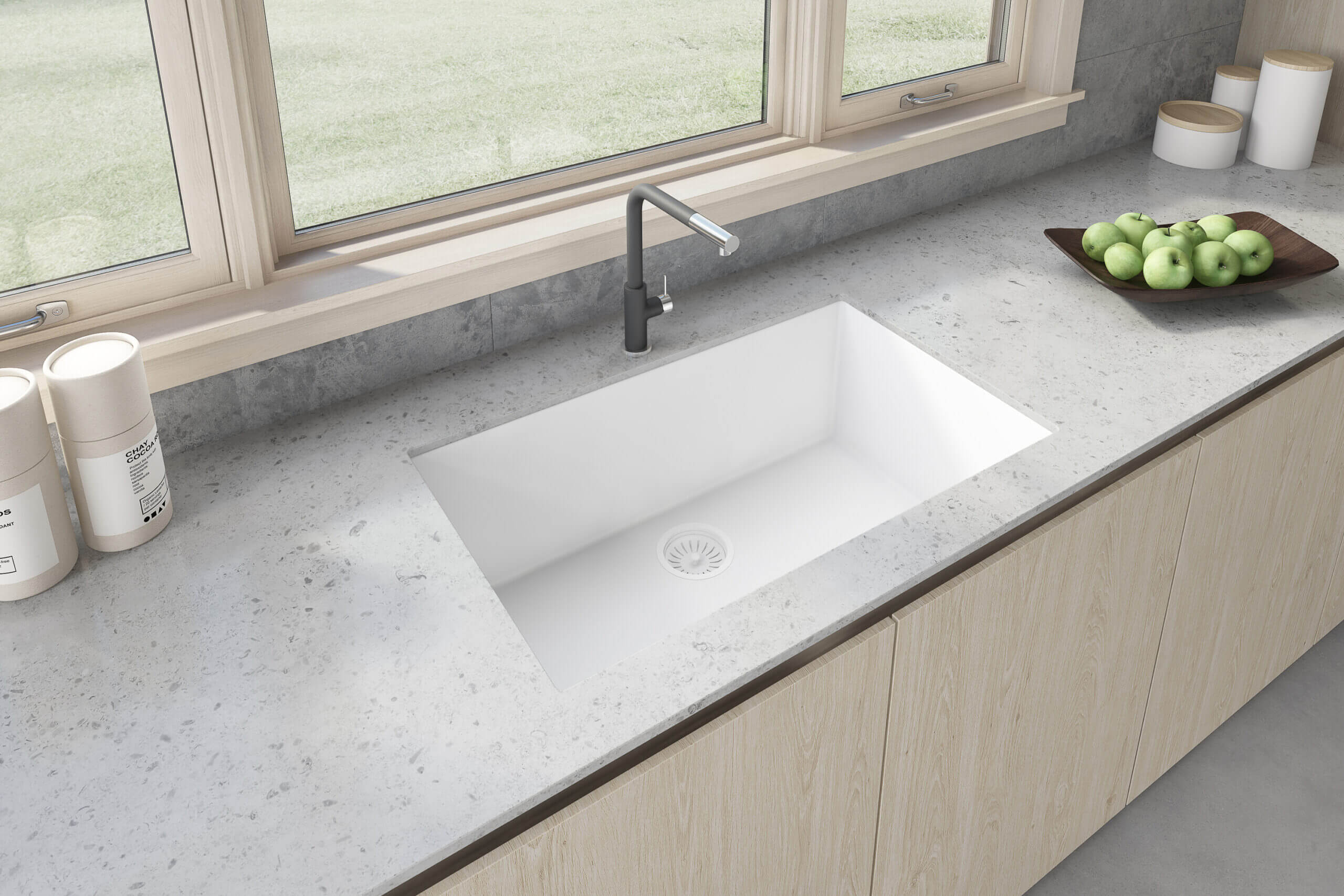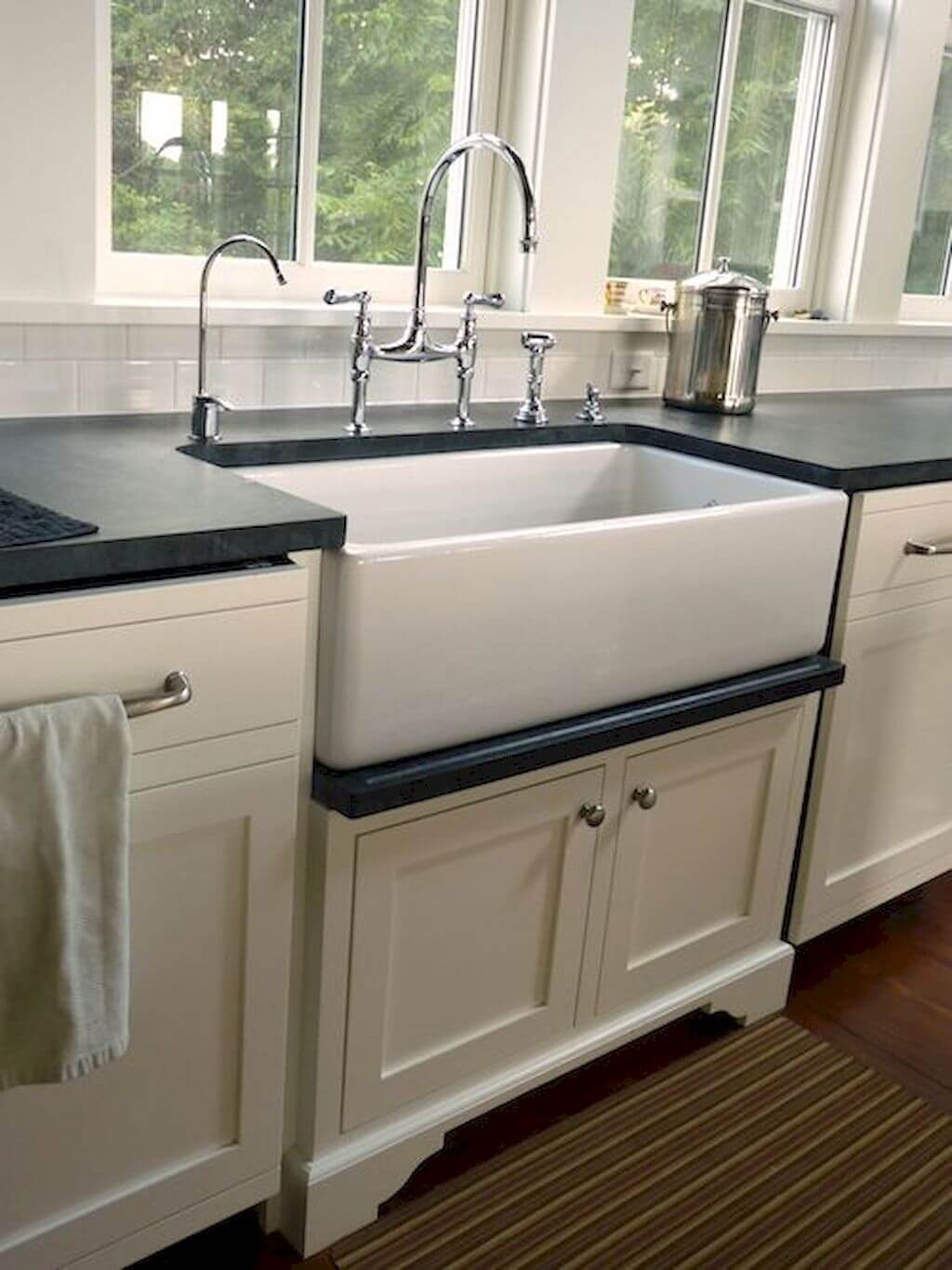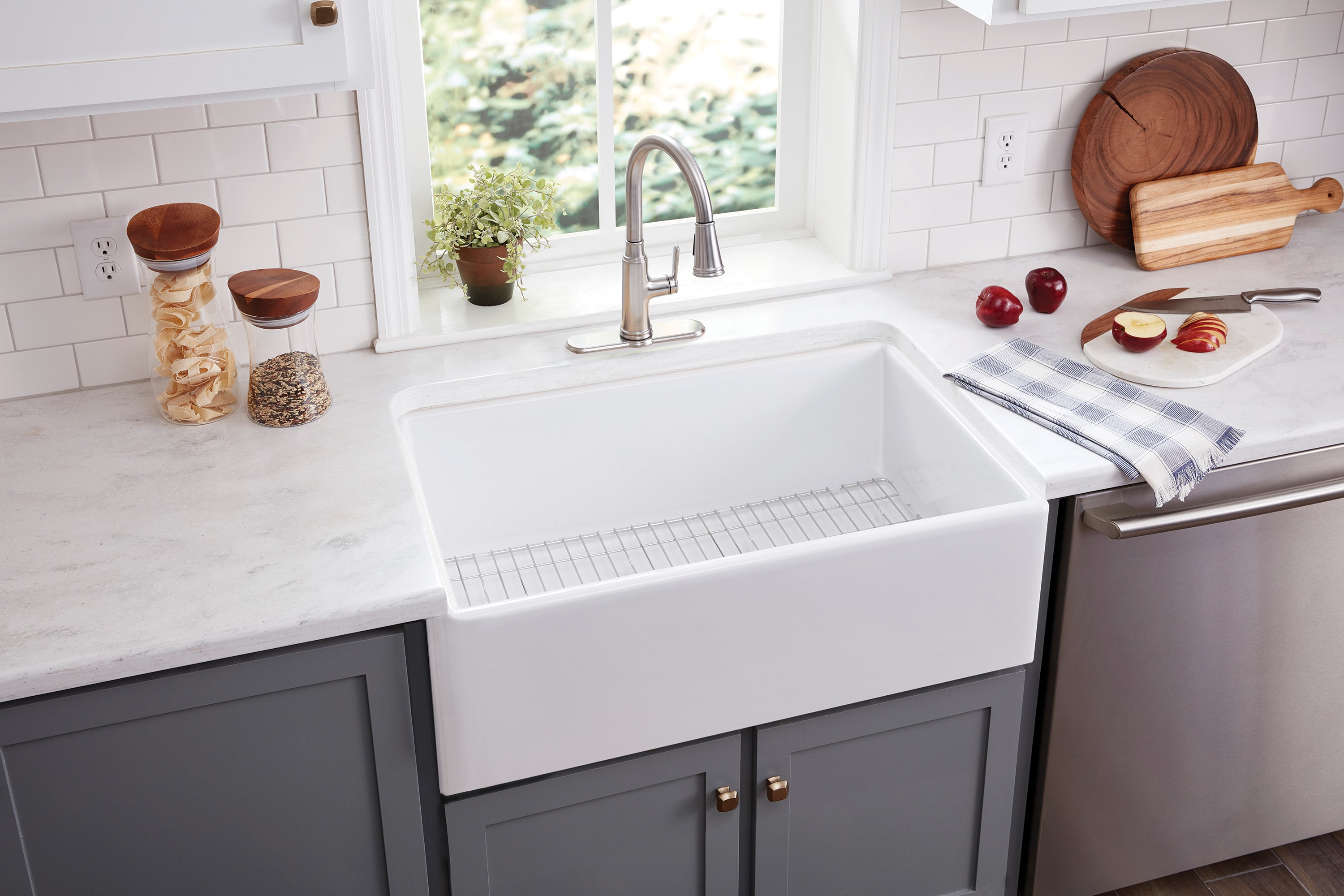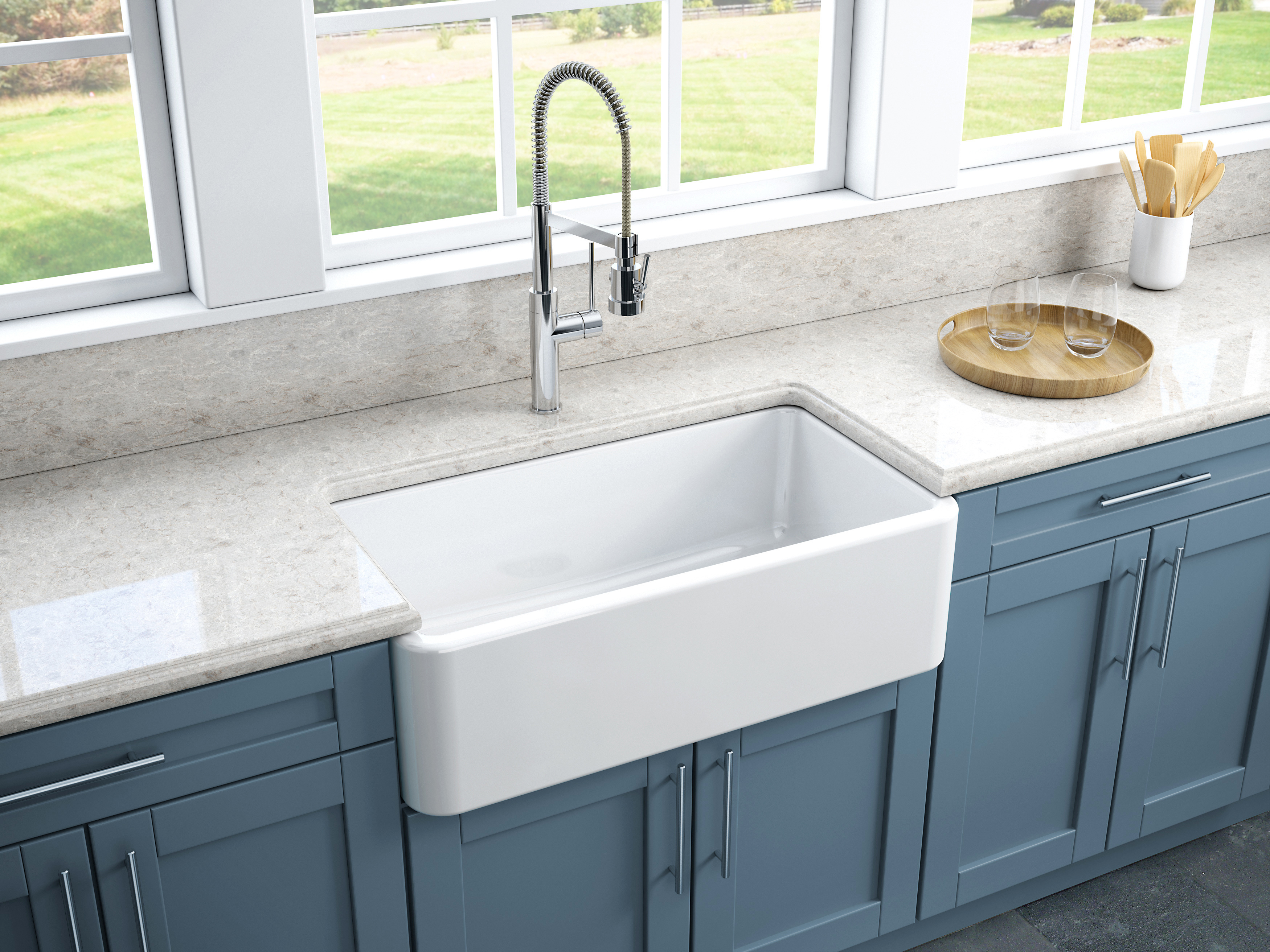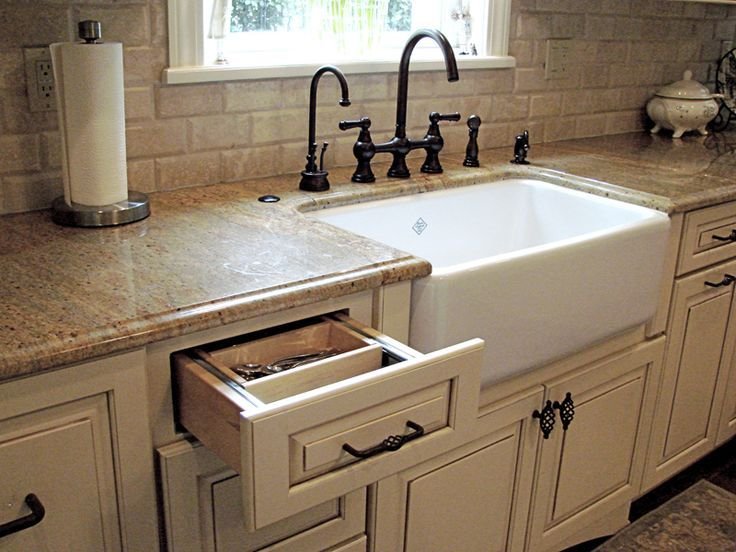Steel kitchen sinks are a popular choice for many homeowners due to their durability and sleek appearance. Made from a combination of iron and carbon, steel sinks are strong and resistant to scratches and stains. They are also easy to clean and maintain, making them a practical choice for busy kitchens. One of the main advantages of steel kitchen sinks is their affordability. They are often more budget-friendly compared to other materials such as ceramic or porcelain. However, it is important to note that the quality of steel used can affect the price. High-quality stainless steel sinks, for example, may be more expensive but also offer better durability and resistance to corrosion. When it comes to style, steel kitchen sinks are available in a variety of designs and finishes. From classic stainless steel to brushed or matte finishes, you can find a sink that complements your kitchen's overall aesthetic. Some steel sinks also come with sound-absorbing pads or coatings to reduce noise and vibrations, making them a great choice for open-concept kitchens.Steel Kitchen Sinks
Ceramic kitchen sinks are known for their timeless beauty and traditional charm. Made from a combination of clay, quartz, and feldspar, these sinks are fired at high temperatures to create a smooth, glossy finish. They are available in a wide range of colors and patterns, making them a versatile choice for any kitchen style. One of the main advantages of ceramic kitchen sinks is their heat resistance. They can withstand high temperatures without being damaged, making them ideal for handling hot pots and pans. They are also non-porous, making them resistant to stains and easy to clean. While ceramic sinks are durable, they are more prone to chipping and cracking compared to other materials. They may also require more maintenance, such as avoiding abrasive cleaners and using gentle cleaning products to preserve their finish. However, the timeless beauty and charm of ceramic sinks make them a popular choice for many homeowners.Ceramic Kitchen Sinks
Porcelain kitchen sinks are similar to ceramic sinks in terms of their composition and manufacturing process. The main difference is that porcelain sinks are fired at higher temperatures, making them even more durable and resistant to scratches and stains. They also have a smooth, glossy finish that adds a touch of elegance to any kitchen. One of the main advantages of porcelain kitchen sinks is their strength and durability. They are less prone to chipping and cracking compared to ceramic sinks, making them a great choice for high-traffic kitchens. They are also non-porous and easy to clean, making them a hygienic option for food preparation. However, porcelain sinks can be more expensive compared to other materials, and they may require extra care to maintain their pristine appearance. They are also heavier than other sink materials, so proper installation and support are necessary.Porcelain Kitchen Sinks
Enamel kitchen sinks are made by coating a metal or cast iron base with enamel, a type of glass that is fused to the surface at high temperatures. This creates a smooth, durable finish that is resistant to scratches, stains, and heat. Enamel sinks are available in a variety of colors and styles, making them a versatile choice for any kitchen design. One of the main advantages of enamel kitchen sinks is their durability. They are resistant to chipping, scratching, and staining, making them a long-lasting option for busy kitchens. They are also easy to clean and maintain, as the enamel coating prevents food particles and liquids from penetrating the surface. However, enamel sinks can be more expensive compared to other materials, and the enamel coating may chip or scratch over time. They are also heavy and may require additional support during installation.Enamel Kitchen Sinks
Stainless steel kitchen sinks are a popular choice for their sleek and modern look. They are made from a combination of iron, chromium, and nickel, making them resistant to rust and corrosion. They are also low maintenance and easy to clean, making them a practical choice for busy kitchens. One of the main advantages of stainless steel kitchen sinks is their versatility. They are available in a variety of sizes, styles, and finishes, making it easy to find one that suits your kitchen's design. They are also budget-friendly, with a range of prices depending on the quality of the steel used. However, stainless steel sinks may be more prone to scratches and dents compared to other materials. Lower gauge stainless steel sinks may also be noisier, so opting for a higher gauge or one with sound-absorbing pads can help reduce noise levels.Stainless Steel Kitchen Sinks
Cast iron kitchen sinks are made from molten iron that is poured into a mold and then coated with a layer of enamel. This results in a heavy, durable sink with a smooth, glossy finish. Cast iron sinks are available in a variety of colors and styles, making them a popular choice for traditional and farmhouse kitchens. One of the main advantages of cast iron kitchen sinks is their durability. They are resistant to chipping, cracking, and scratches, making them a long-lasting option for busy kitchens. They are also non-porous and easy to clean, making them a hygienic choice for food preparation. However, cast iron sinks can be heavy and may require extra support during installation. They are also more expensive compared to other materials and may require more maintenance to preserve their enamel coating.Cast Iron Kitchen Sinks
Fireclay kitchen sinks are made from a combination of clay and glaze that is fired at high temperatures to create a strong, durable sink. They have a smooth, glossy finish and are available in a variety of colors and styles. Fireclay sinks are a popular choice for farmhouse and traditional kitchens. One of the main advantages of fireclay kitchen sinks is their strength and durability. They are resistant to chipping, cracking, and staining, making them a practical choice for busy kitchens. They are also non-porous and easy to clean, making them a hygienic option for food preparation. However, fireclay sinks can be more expensive compared to other materials, and they may require extra care to maintain their finish. They are also heavy and may require additional support during installation.Fireclay Kitchen Sinks
Acrylic kitchen sinks are made from a type of plastic called polymethyl methacrylate (PMMA). They are lightweight, durable, and available in a variety of colors and styles. Acrylic sinks are a budget-friendly option for those looking to update their kitchen without breaking the bank. One of the main advantages of acrylic kitchen sinks is their affordability. They are often less expensive compared to other materials such as stainless steel or fireclay. They are also easy to clean and maintain, making them a practical choice for busy kitchens. However, acrylic sinks may be more prone to scratches and stains compared to other materials. They may also be less durable and may not withstand high temperatures or heavy impact as well as other materials.Acrylic Kitchen Sinks
Composite kitchen sinks are made from a combination of materials, such as granite, quartz, or marble, mixed with acrylic resins. This results in a strong, durable sink with a natural stone-like appearance. Composite sinks are available in a variety of colors and styles, making them a versatile choice for any kitchen design. One of the main advantages of composite kitchen sinks is their durability. They are resistant to scratches, stains, and heat, making them a long-lasting option for busy kitchens. They are also easy to clean and maintain, as the non-porous surface prevents stains and bacteria from penetrating the sink. However, composite sinks can be more expensive compared to other materials, and the natural stone-like appearance may not appeal to everyone. They may also be heavy and may require additional support during installation.Composite Kitchen Sinks
Farmhouse kitchen sinks, also known as apron sinks, are a popular choice for their rustic and charming look. They have a deep basin and a front panel that extends past the edge of the countertop. Farmhouse sinks are available in a variety of materials, including fireclay, cast iron, and stainless steel, making them a versatile option for any kitchen. One of the main advantages of farmhouse kitchen sinks is their large and deep basin, which makes them perfect for handling large pots and pans. They also add a touch of charm and character to any kitchen design. They are also available in a range of materials, making it easy to find one that fits your budget and style. However, farmhouse sinks may require custom cabinetry or modifications to fit properly, which can add to the overall cost. They may also be more challenging to install compared to other types of sinks.Farmhouse Kitchen Sinks
Comparing Kitchen Sink Materials: Steel vs Ceramic vs Porcelain vs Enamel
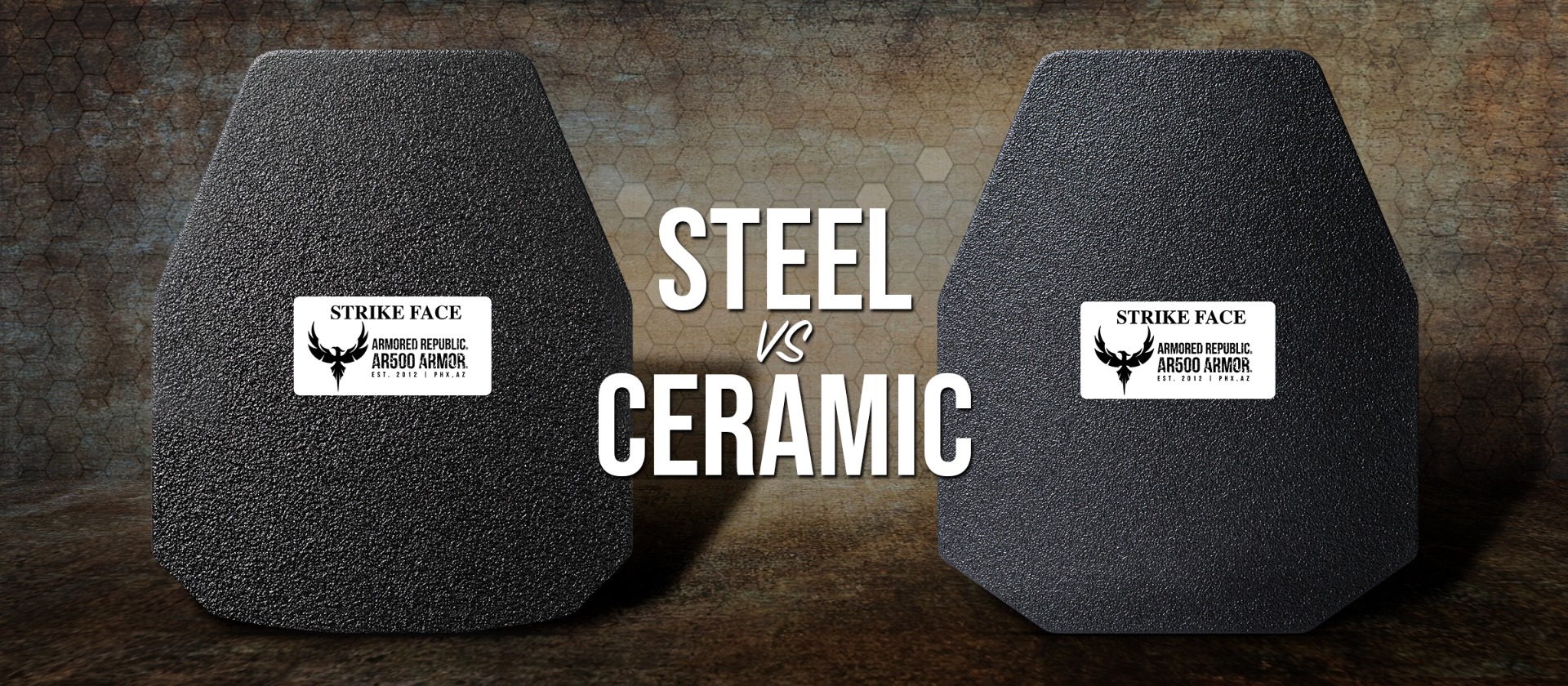
The Importance of Choosing the Right Kitchen Sink
 When it comes to designing a house, every detail matters. From the color of the walls to the type of flooring, each decision plays a crucial role in creating a cohesive and functional space. The same can be said for choosing the right kitchen sink. While it may seem like a small detail, the type of material used for your kitchen sink can greatly impact the overall look and feel of your kitchen. With so many different options available, it can be overwhelming to make a decision. In this article, we will be comparing four popular kitchen sink materials: steel, ceramic, porcelain, and enamel, to help you make the best choice for your home.
When it comes to designing a house, every detail matters. From the color of the walls to the type of flooring, each decision plays a crucial role in creating a cohesive and functional space. The same can be said for choosing the right kitchen sink. While it may seem like a small detail, the type of material used for your kitchen sink can greatly impact the overall look and feel of your kitchen. With so many different options available, it can be overwhelming to make a decision. In this article, we will be comparing four popular kitchen sink materials: steel, ceramic, porcelain, and enamel, to help you make the best choice for your home.
Steel Kitchen Sinks: Sleek and Durable
 Steel
kitchen sinks are a popular choice for their sleek and modern look. They are made from stainless steel, which is known for its durability and resistance to stains and scratches. The non-porous surface of stainless steel also makes it easy to clean and maintain. This material is also highly heat-resistant, making it a great choice for busy kitchens where hot pots and pans are frequently used. However, steel sinks are more prone to water spots and can be quite noisy when water is running, so keep this in mind when making your decision.
Steel
kitchen sinks are a popular choice for their sleek and modern look. They are made from stainless steel, which is known for its durability and resistance to stains and scratches. The non-porous surface of stainless steel also makes it easy to clean and maintain. This material is also highly heat-resistant, making it a great choice for busy kitchens where hot pots and pans are frequently used. However, steel sinks are more prone to water spots and can be quite noisy when water is running, so keep this in mind when making your decision.
Ceramic Kitchen Sinks: Classic and Timeless
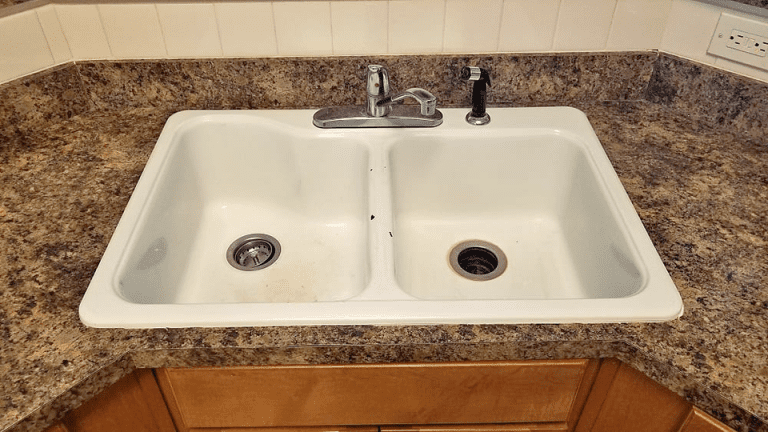 For a more traditional and
timeless
look,
ceramic
kitchen sinks are a great option. Made from a mixture of clay and other materials, ceramic sinks are known for their durability and resistance to stains and scratches. They also come in a variety of colors and designs, making it easy to find one that fits your kitchen's aesthetic. However, ceramic sinks can be prone to cracking or chipping if heavy objects are dropped on them, so it's important to handle them with care.
For a more traditional and
timeless
look,
ceramic
kitchen sinks are a great option. Made from a mixture of clay and other materials, ceramic sinks are known for their durability and resistance to stains and scratches. They also come in a variety of colors and designs, making it easy to find one that fits your kitchen's aesthetic. However, ceramic sinks can be prone to cracking or chipping if heavy objects are dropped on them, so it's important to handle them with care.
Porcelain Kitchen Sinks: Elegant and Versatile
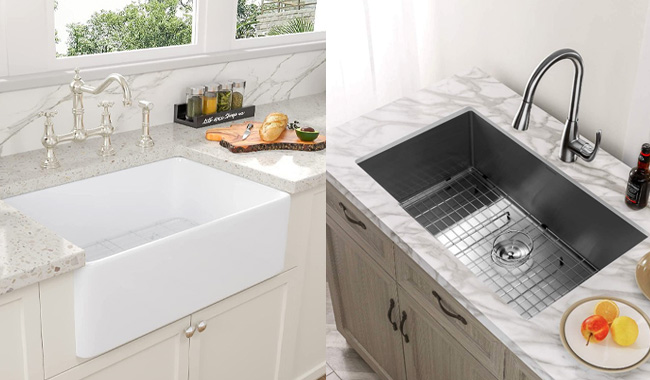 Porcelain
kitchen sinks are similar to ceramic sinks in that they are made from a mixture of clay and other materials. However, porcelain sinks are coated with a layer of enamel, which gives them a smooth and glossy finish. This makes them a popular choice for those looking for an elegant and
versatile
sink option. They are also highly resistant to stains and scratches, making them easy to clean and maintain. However, like ceramic sinks, they can be prone to cracking or chipping.
Porcelain
kitchen sinks are similar to ceramic sinks in that they are made from a mixture of clay and other materials. However, porcelain sinks are coated with a layer of enamel, which gives them a smooth and glossy finish. This makes them a popular choice for those looking for an elegant and
versatile
sink option. They are also highly resistant to stains and scratches, making them easy to clean and maintain. However, like ceramic sinks, they can be prone to cracking or chipping.
Enamel Kitchen Sinks: Vintage and Charming
 If you're looking for a
vintage
and
charming
addition to your kitchen, consider an
enamel
kitchen sink. Similar to porcelain sinks, enamel sinks are coated with a layer of enamel, giving them a smooth and glossy finish. This material is highly durable and resistant to stains and scratches, making it a practical choice for everyday use. However, enamel sinks can be more expensive than other options and may require more maintenance to keep them looking their best.
If you're looking for a
vintage
and
charming
addition to your kitchen, consider an
enamel
kitchen sink. Similar to porcelain sinks, enamel sinks are coated with a layer of enamel, giving them a smooth and glossy finish. This material is highly durable and resistant to stains and scratches, making it a practical choice for everyday use. However, enamel sinks can be more expensive than other options and may require more maintenance to keep them looking their best.
Making the Right Choice for Your Kitchen
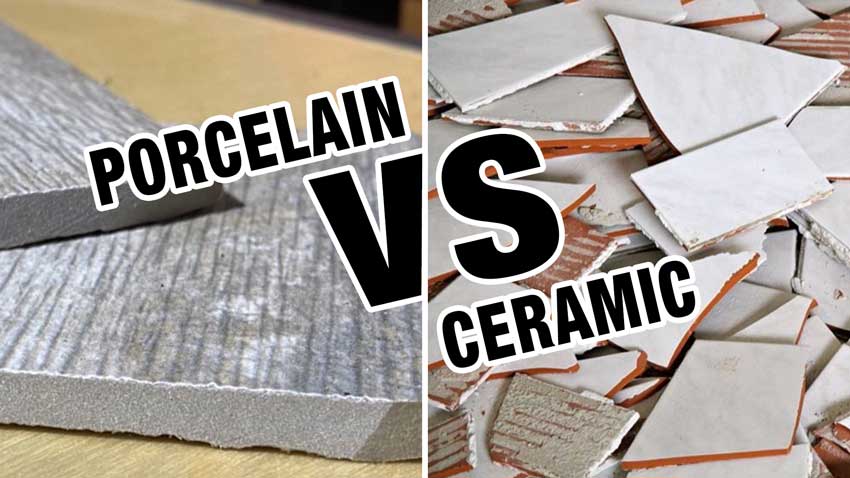 When it comes to choosing the right kitchen sink material, there is no one-size-fits-all solution. It ultimately comes down to personal preference and the specific needs of your household. Consider the style, durability, and maintenance requirements of each material before making your decision. No matter which option you choose, a well-chosen kitchen sink can add both functionality and style to your home.
When it comes to choosing the right kitchen sink material, there is no one-size-fits-all solution. It ultimately comes down to personal preference and the specific needs of your household. Consider the style, durability, and maintenance requirements of each material before making your decision. No matter which option you choose, a well-chosen kitchen sink can add both functionality and style to your home.


